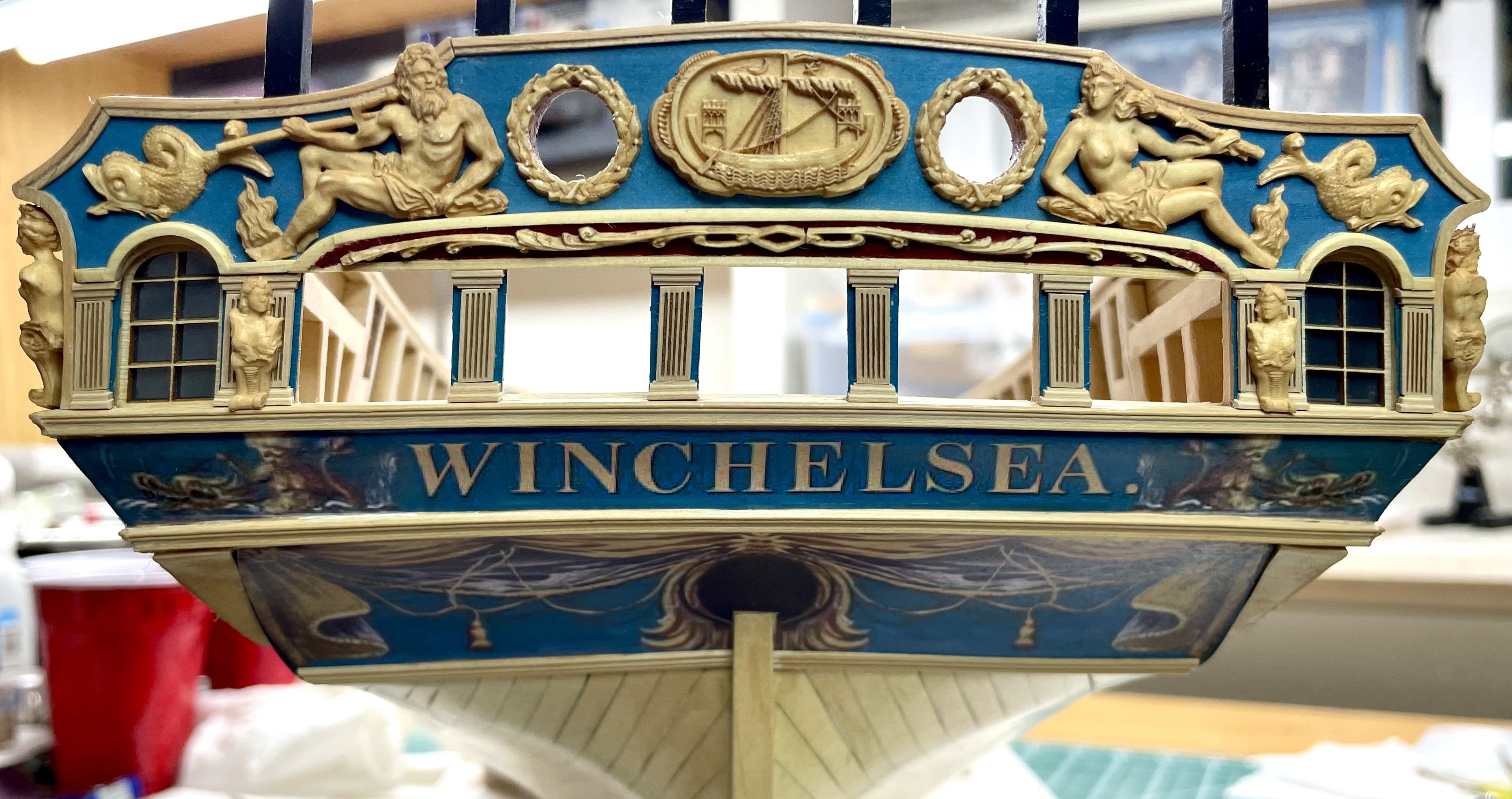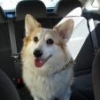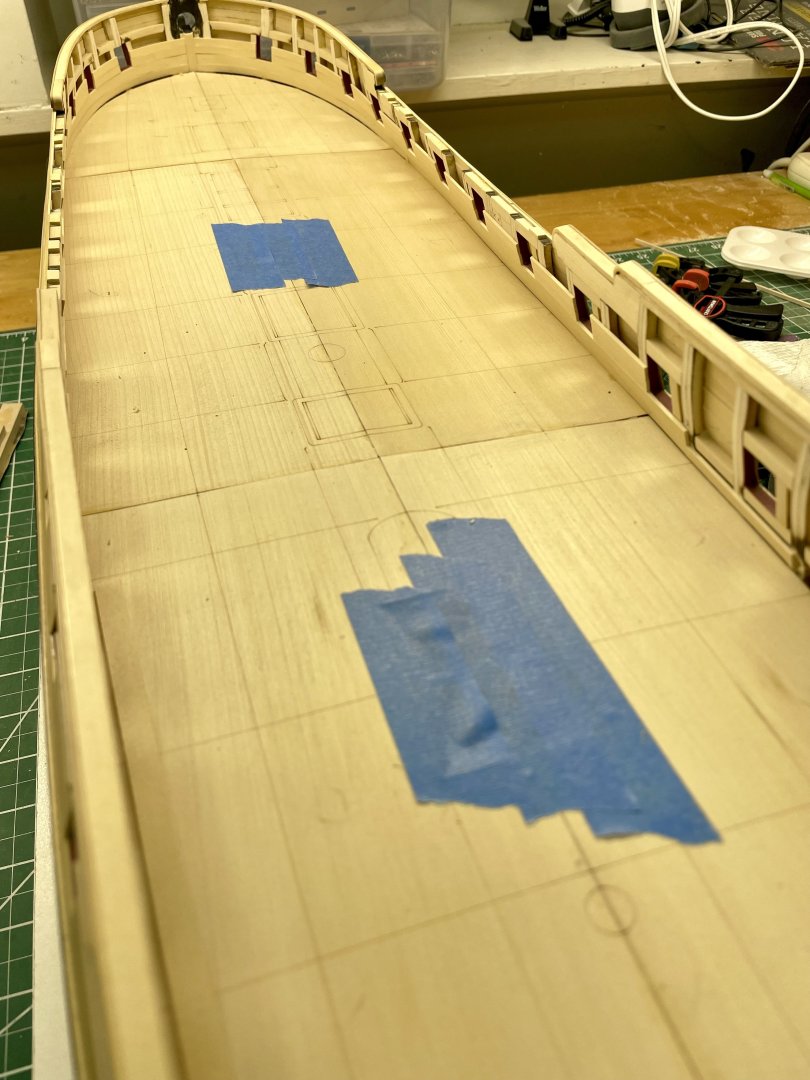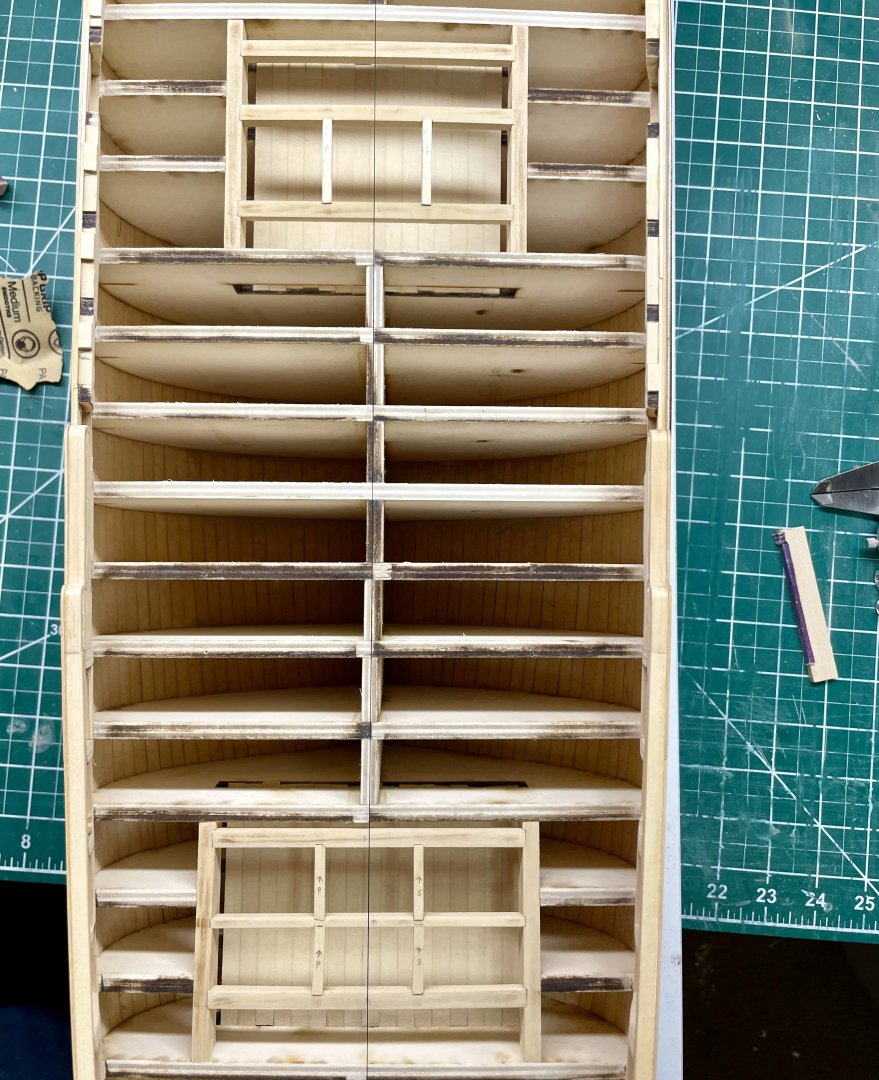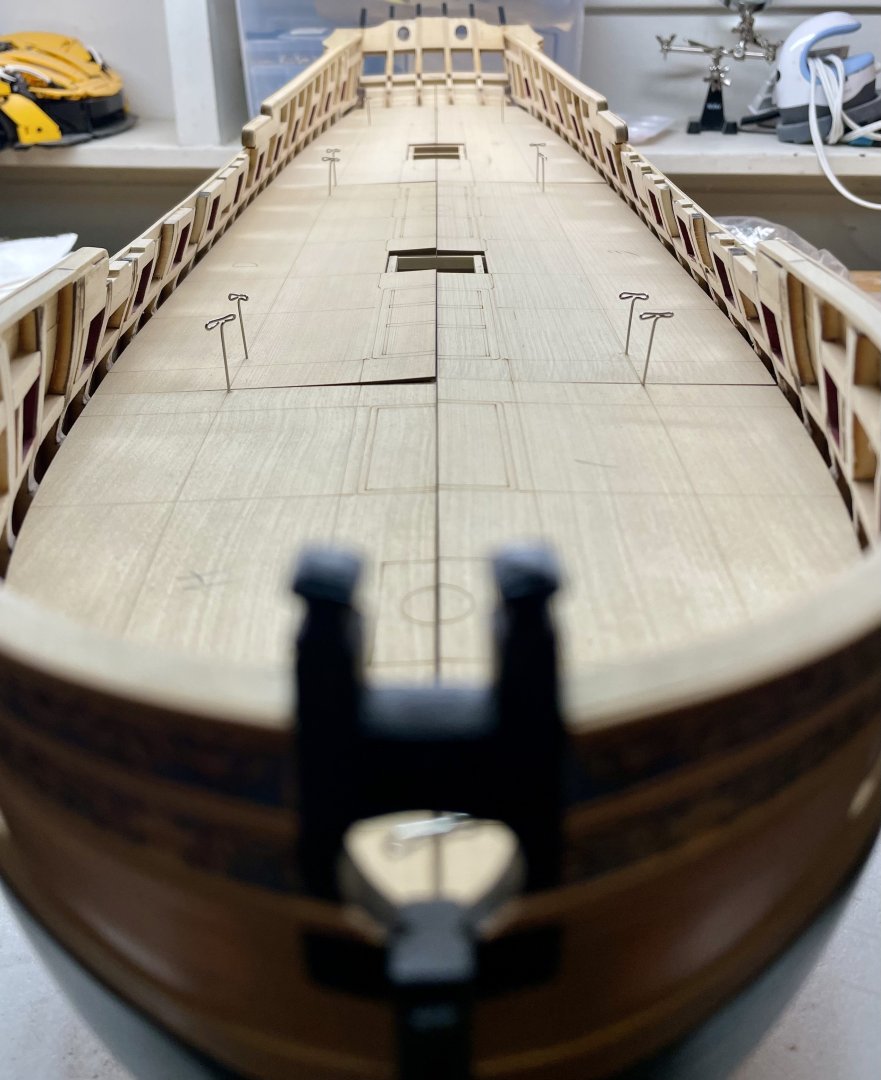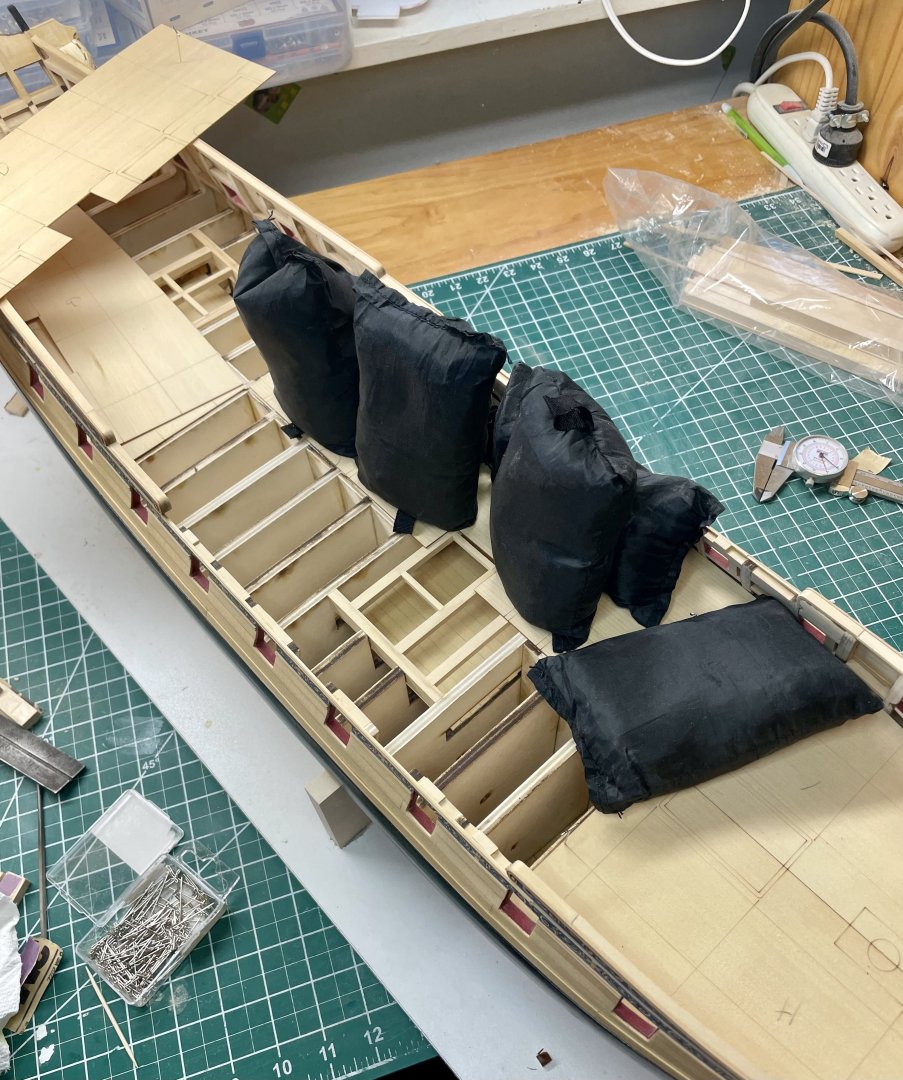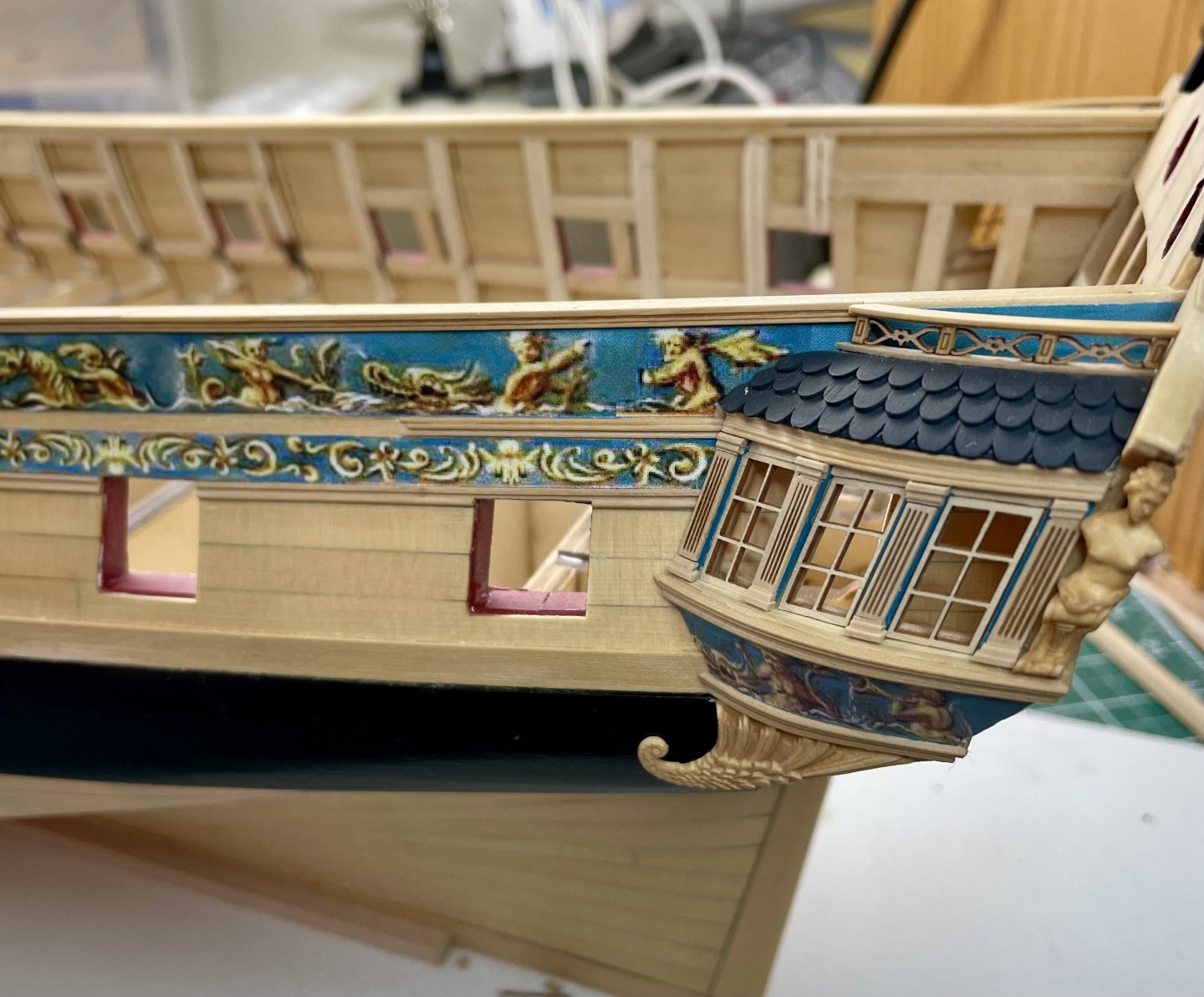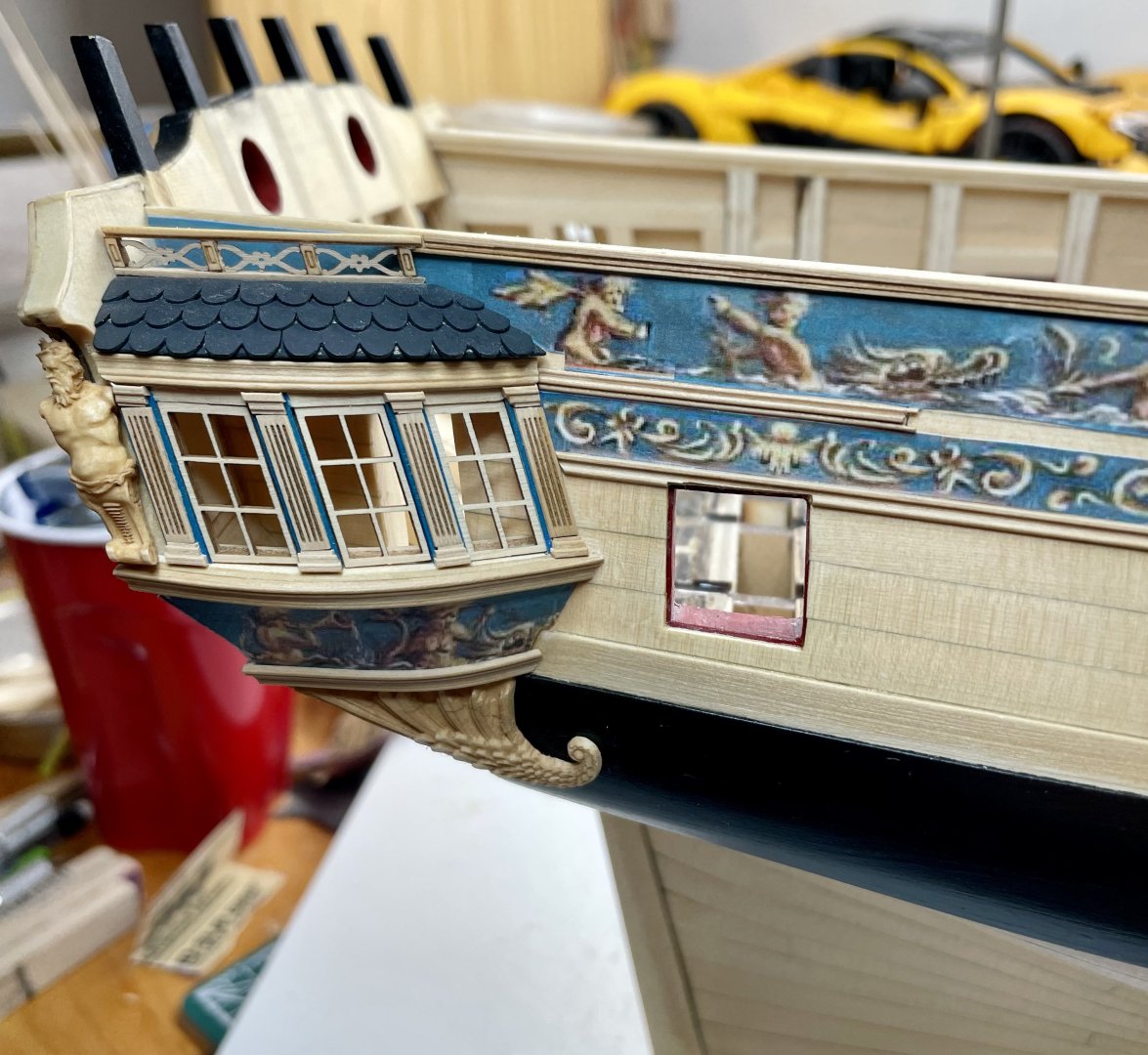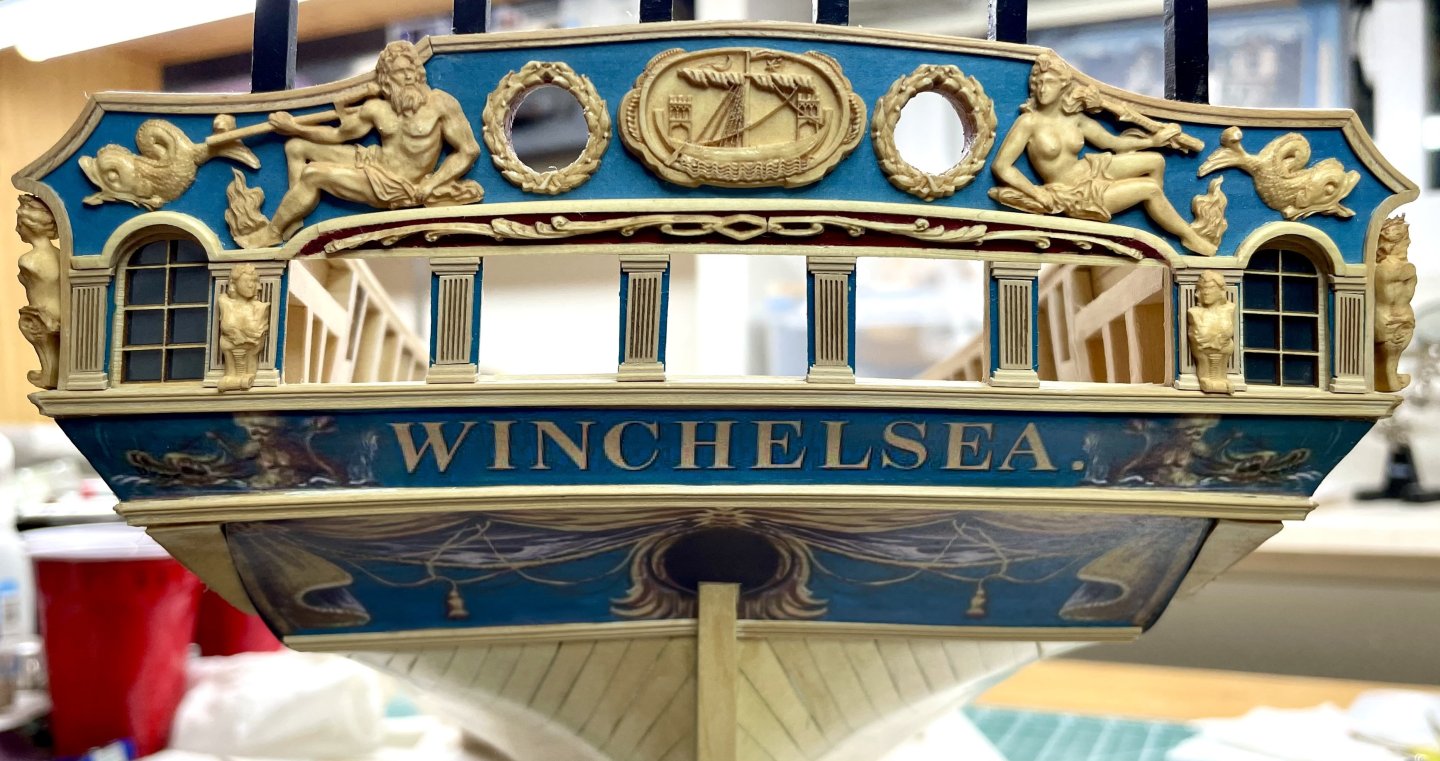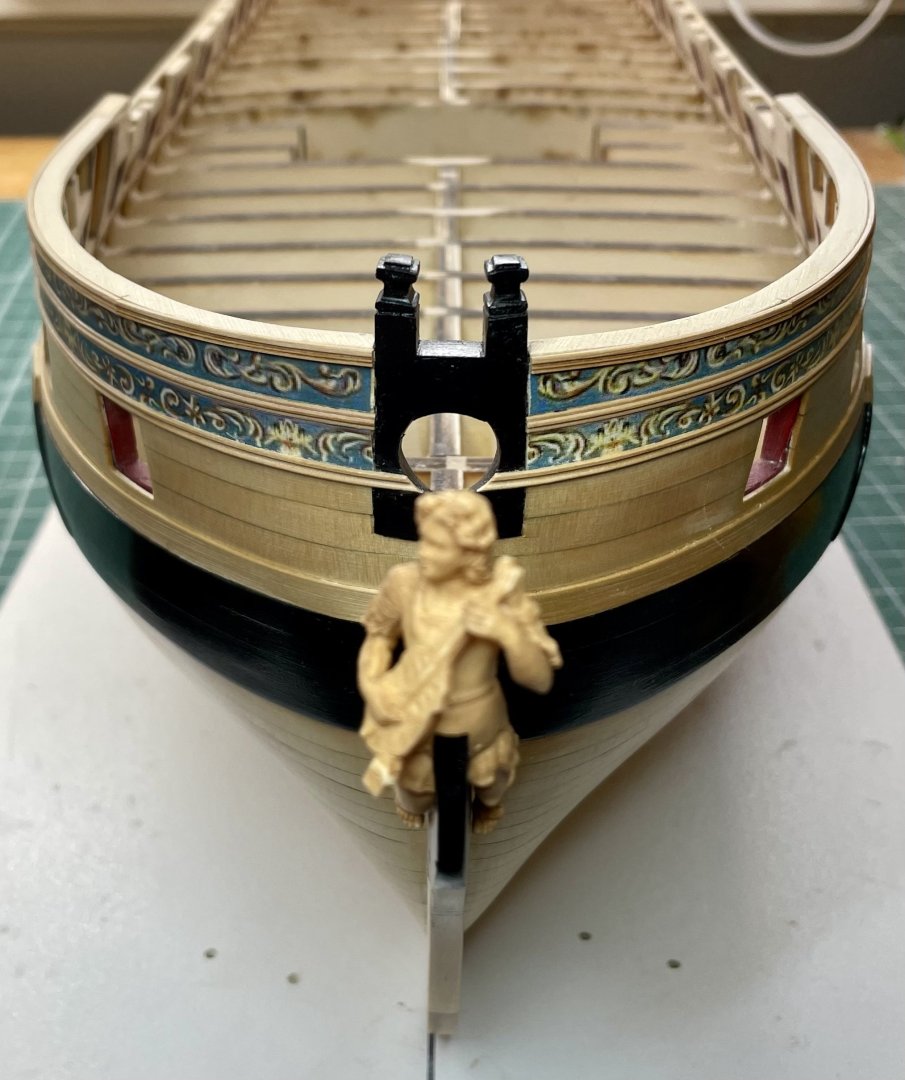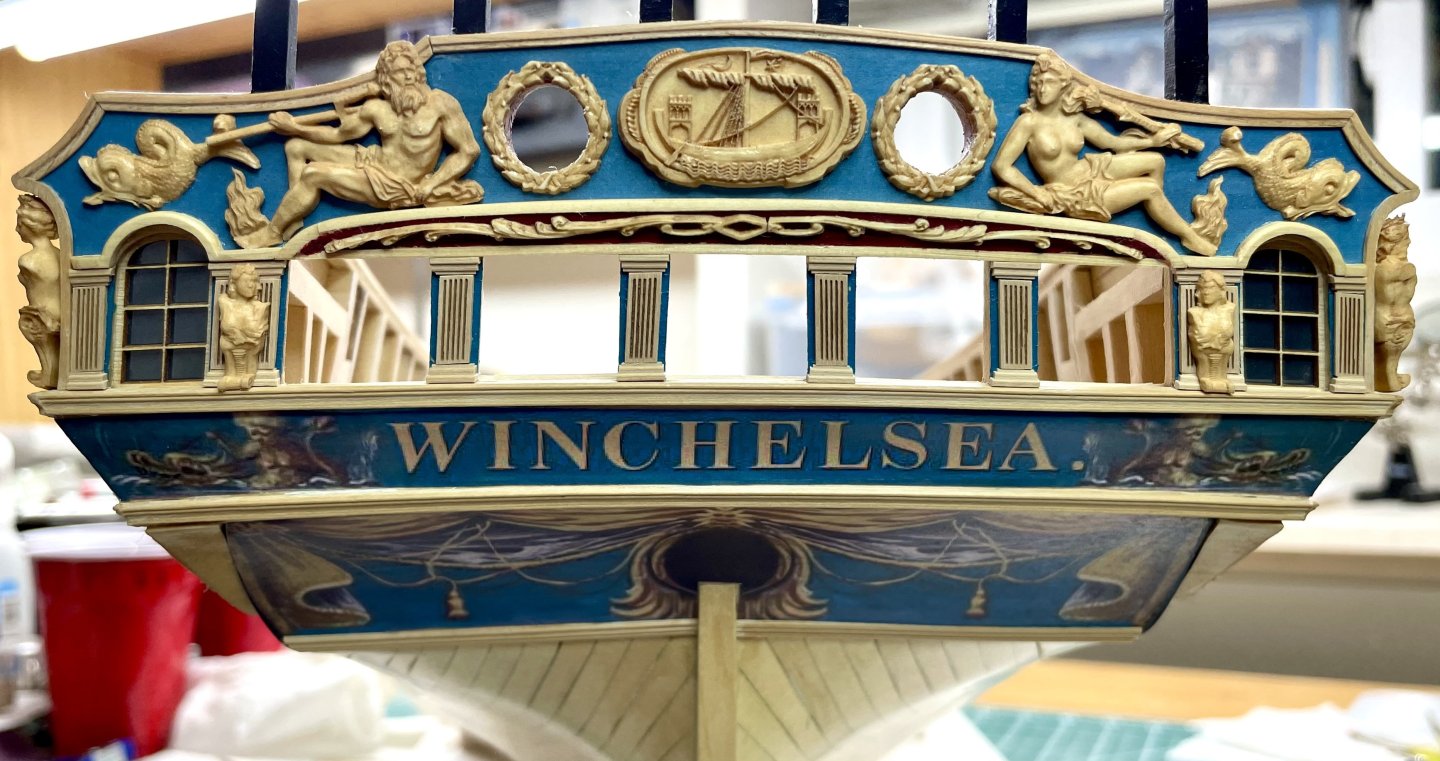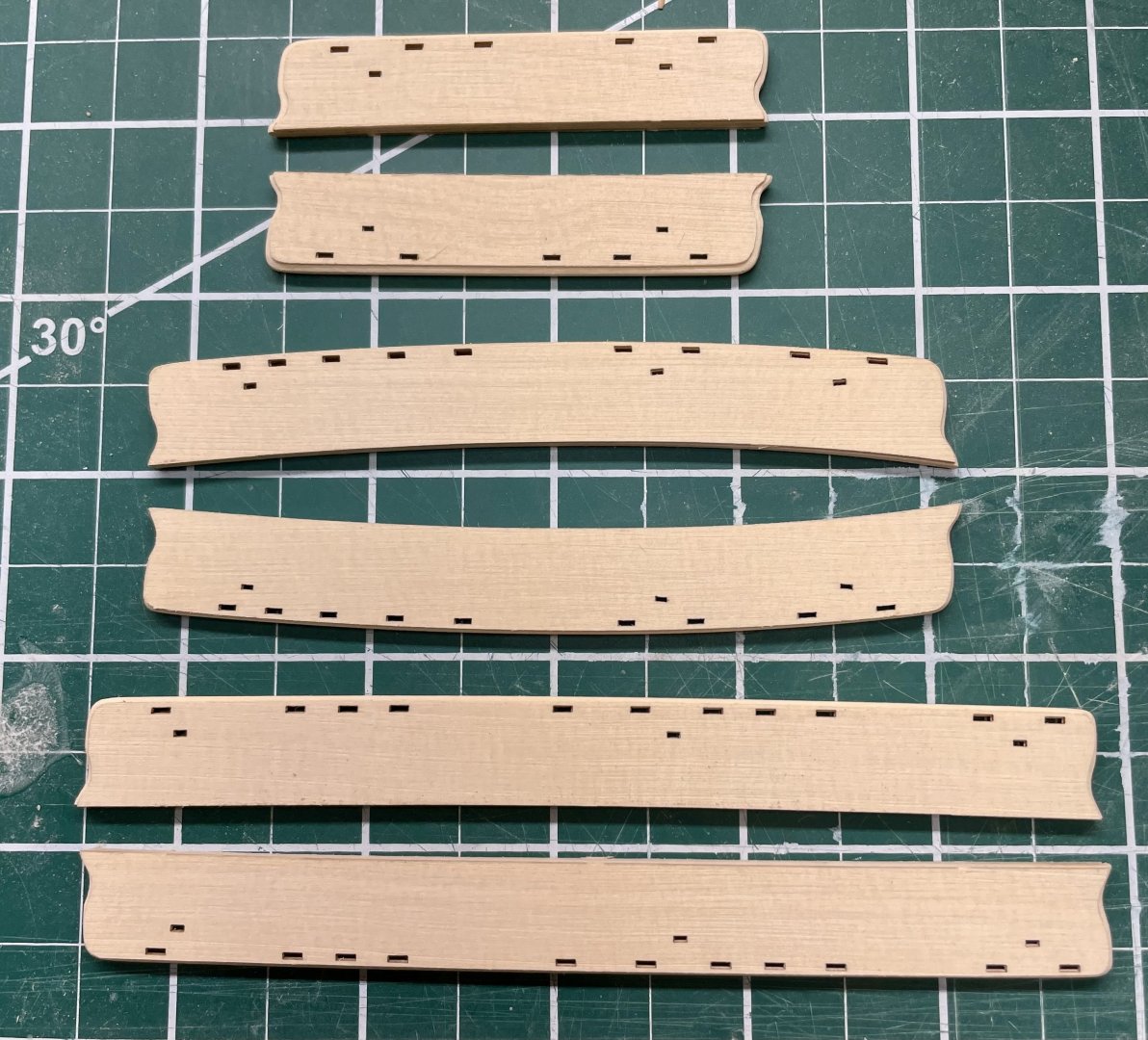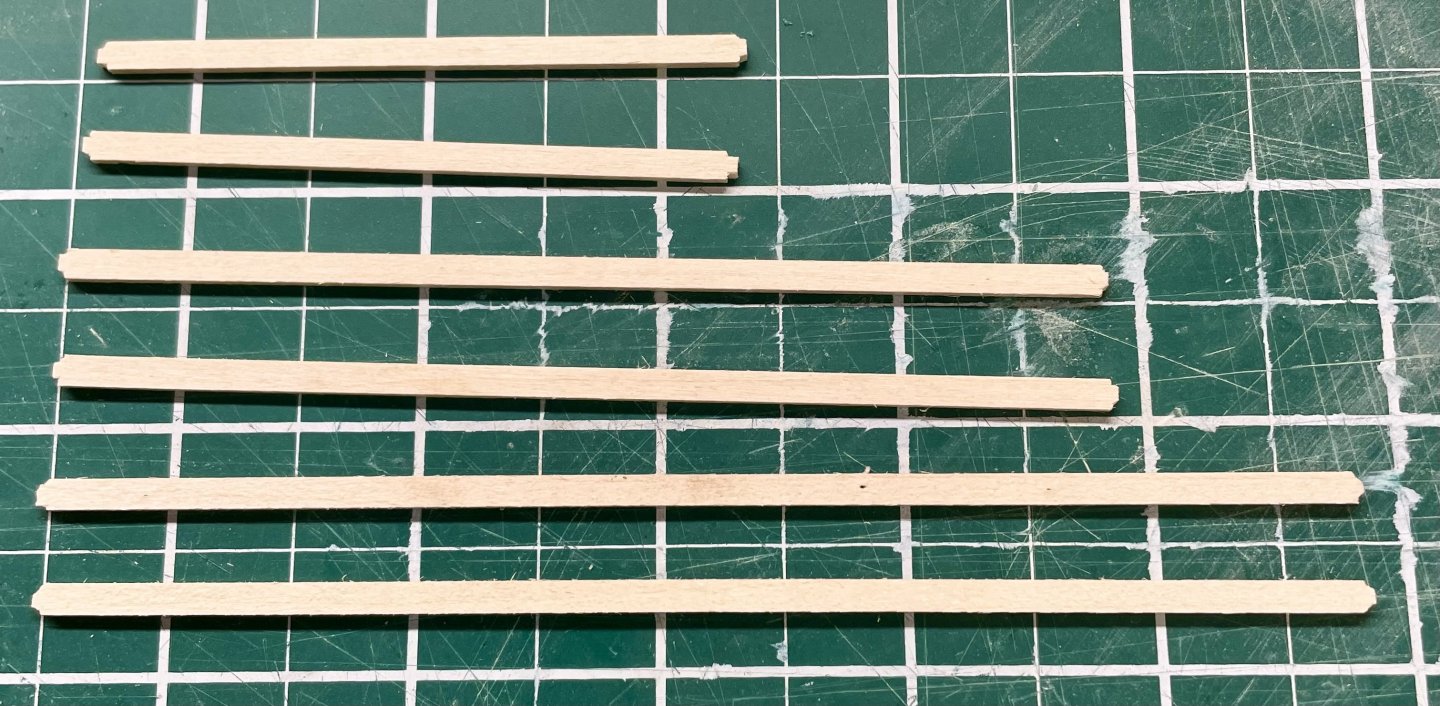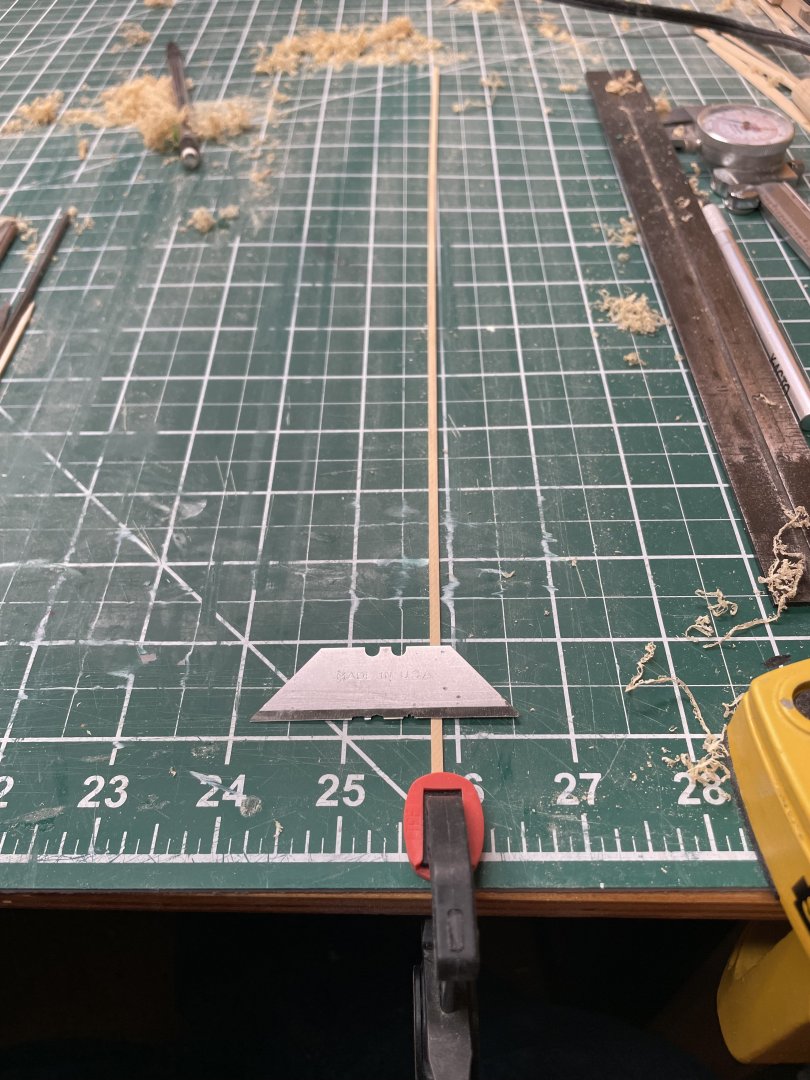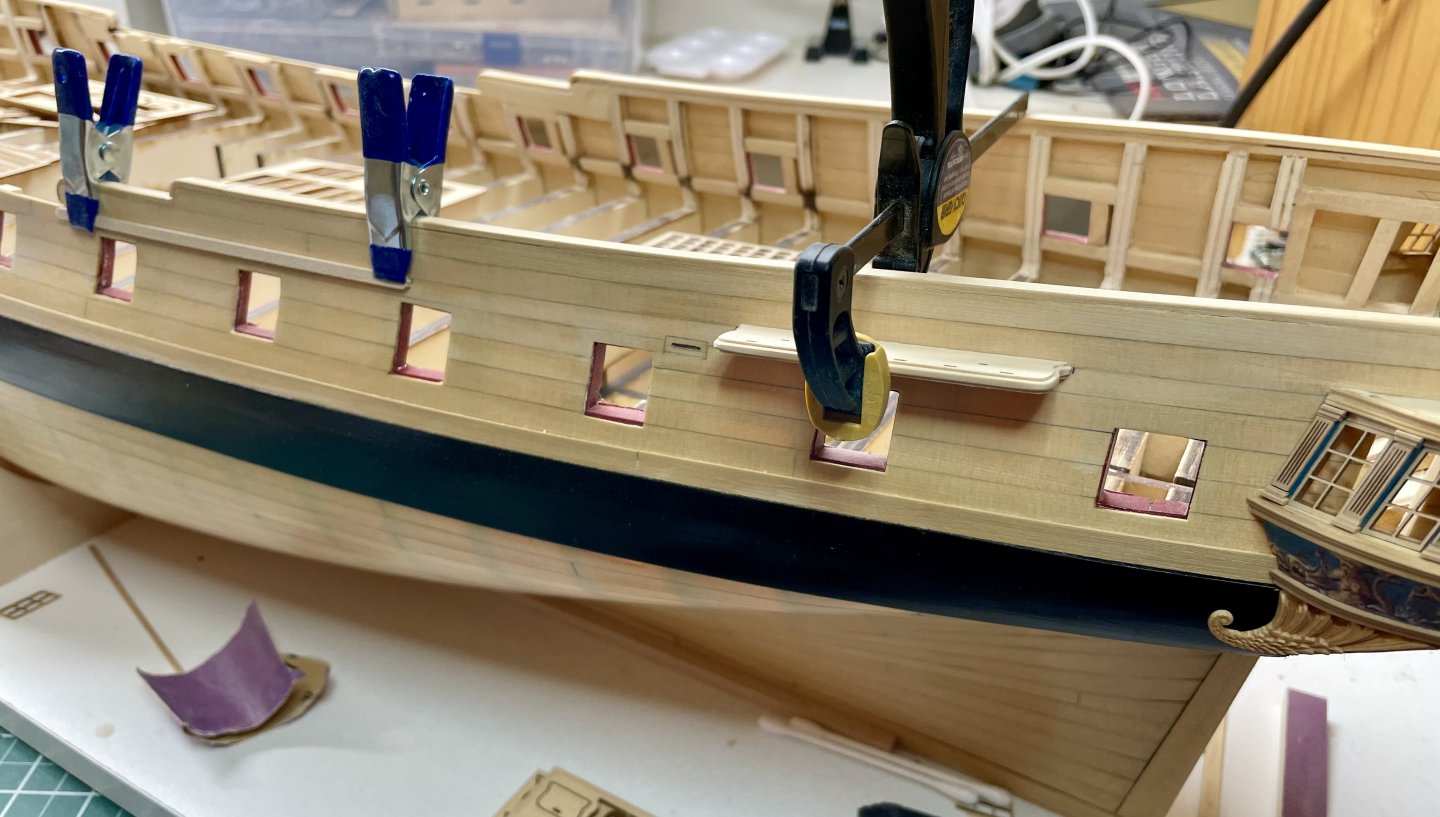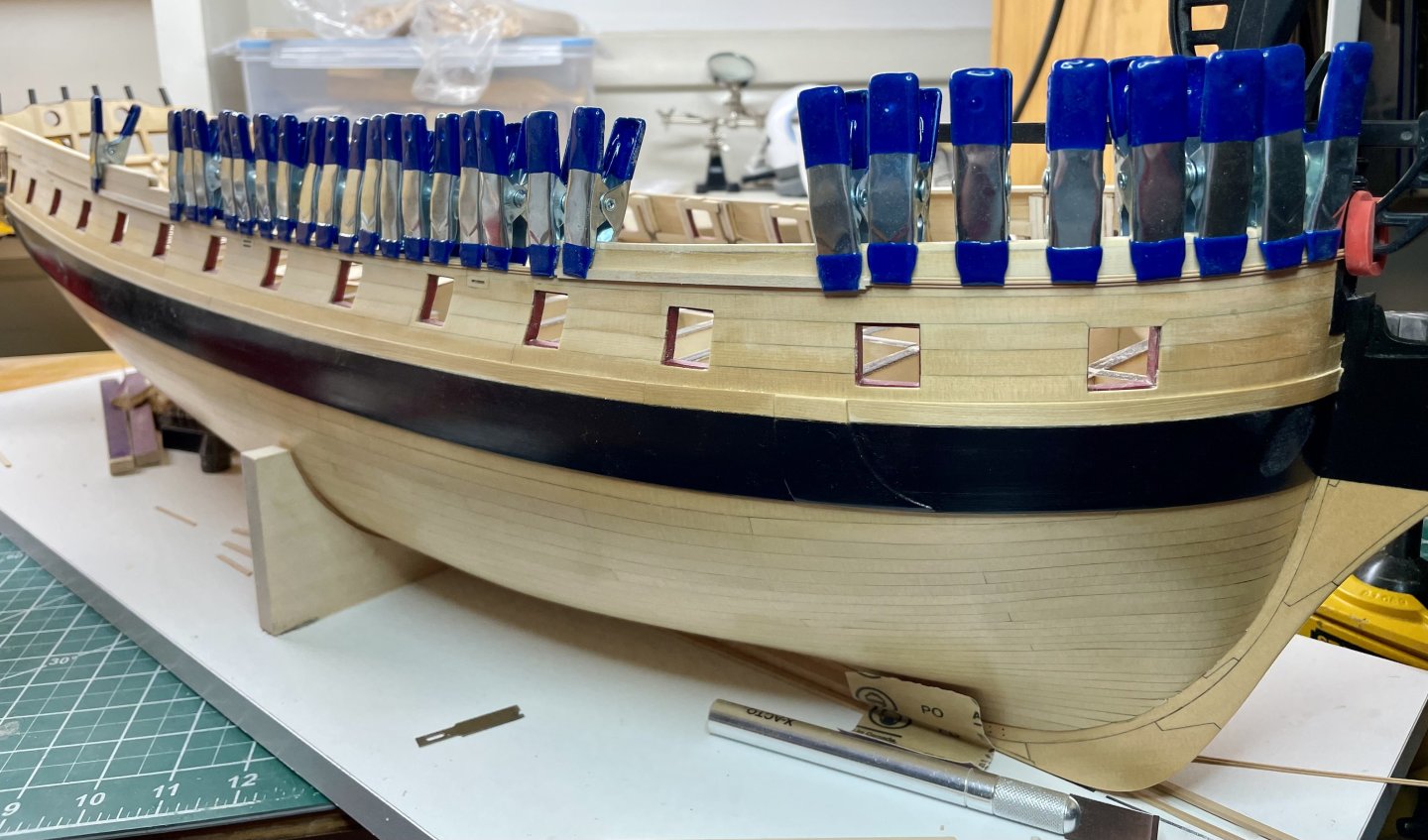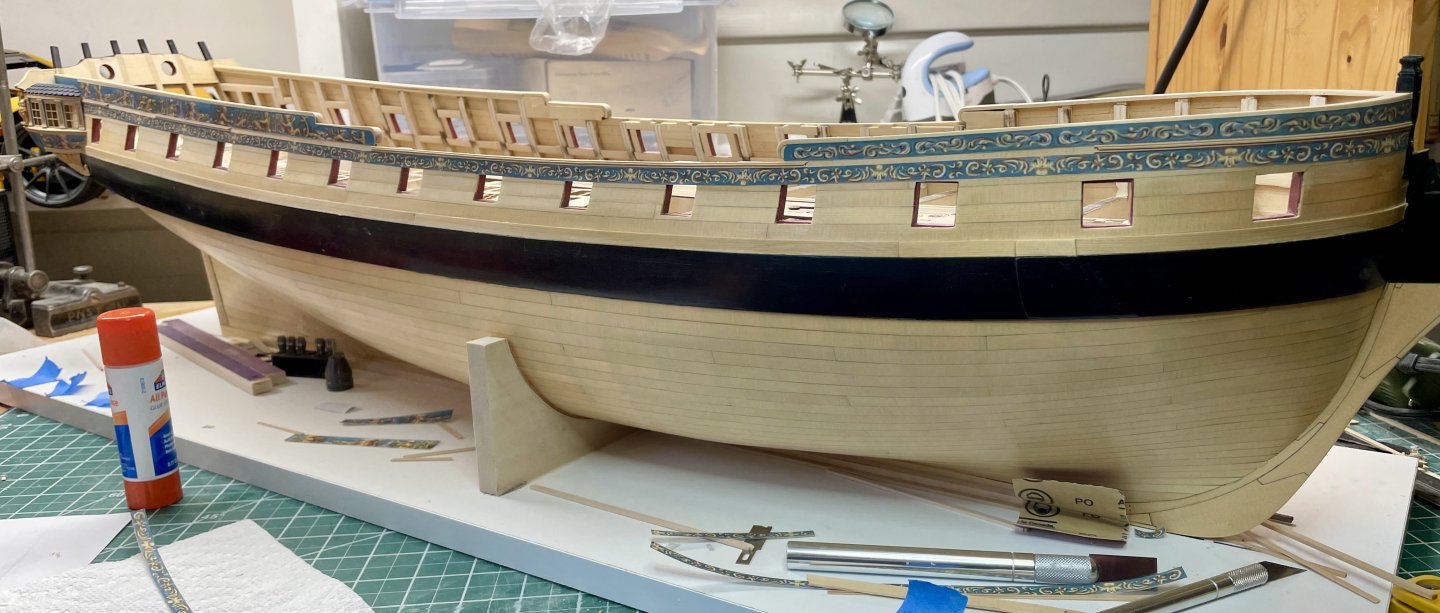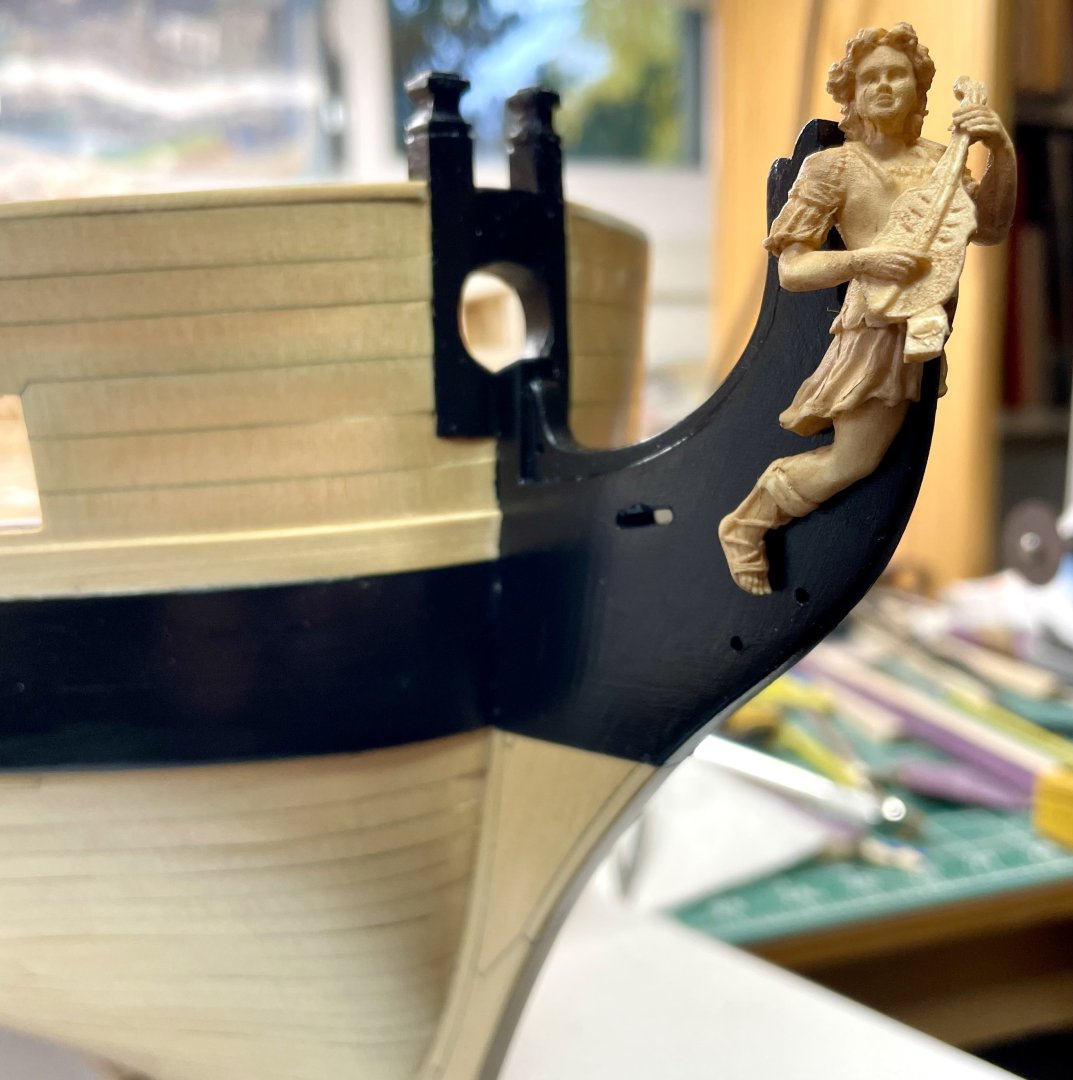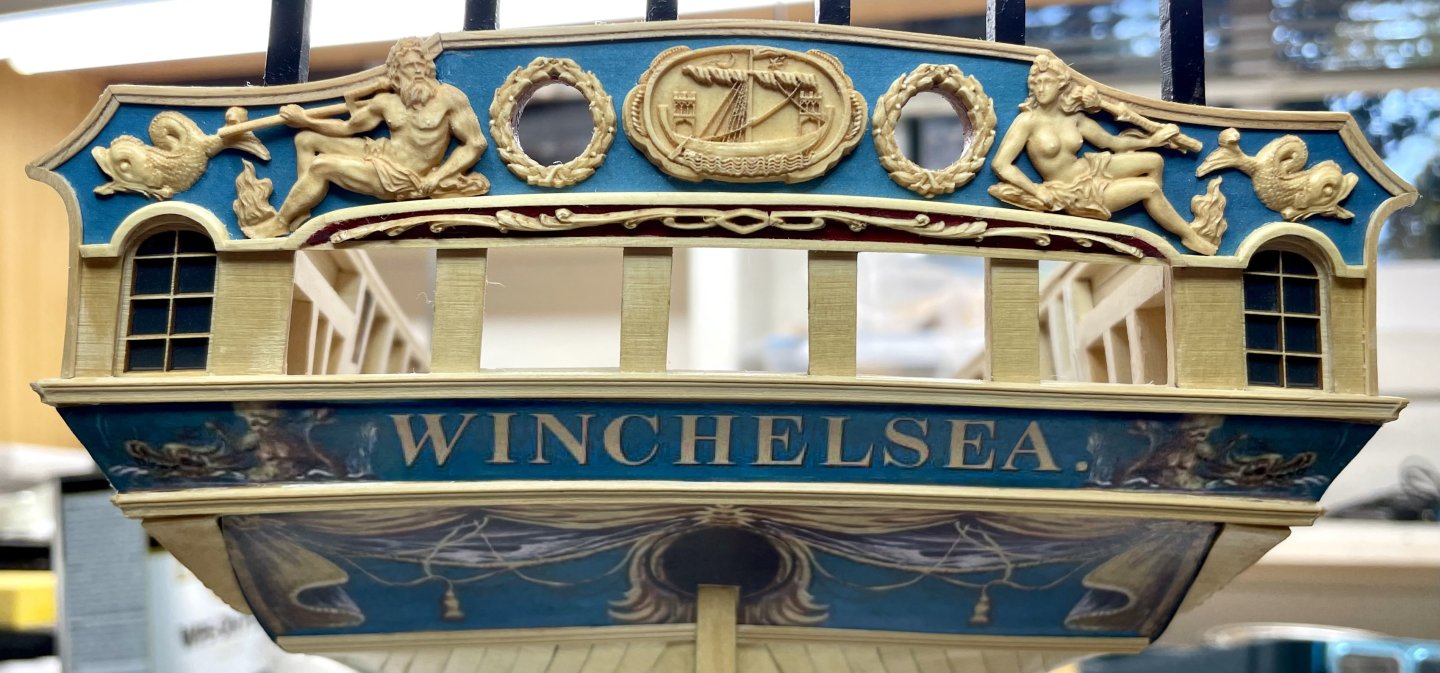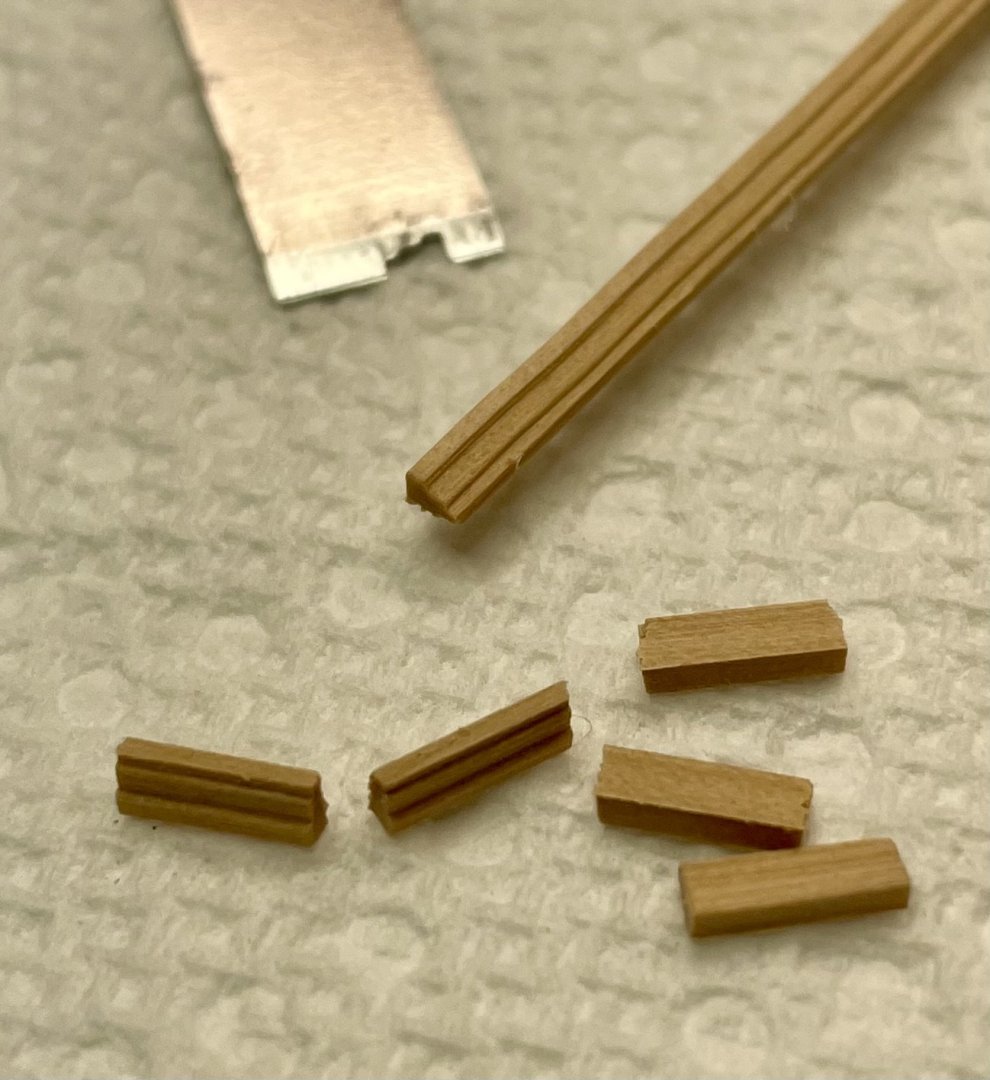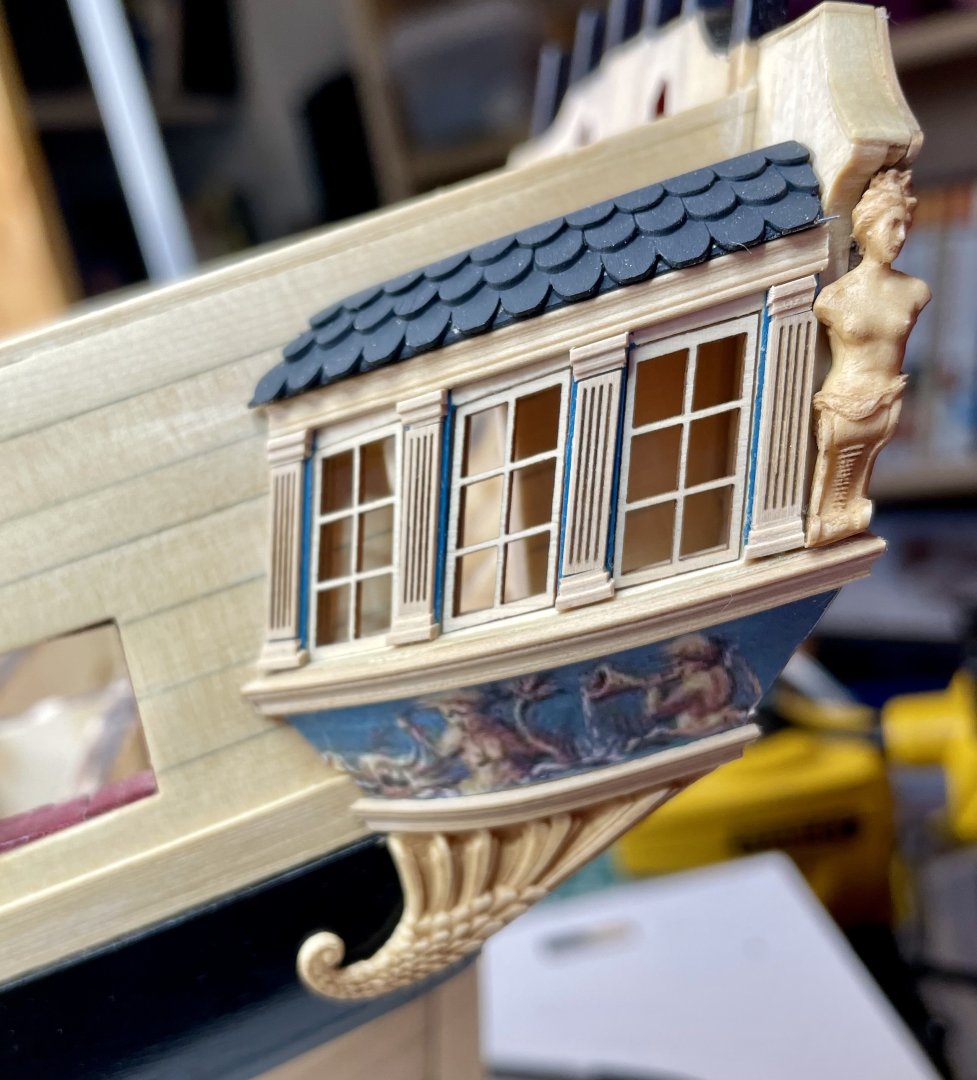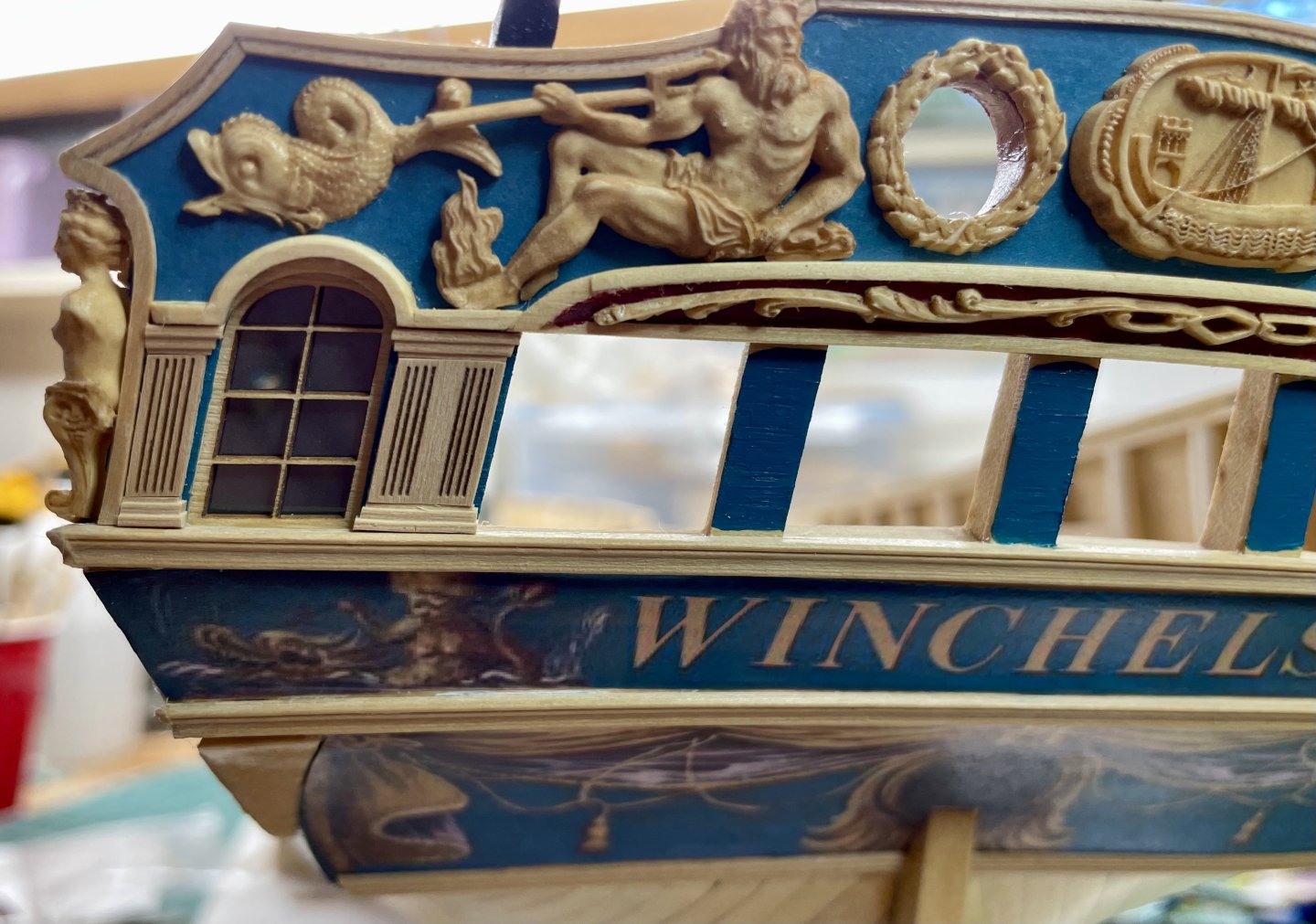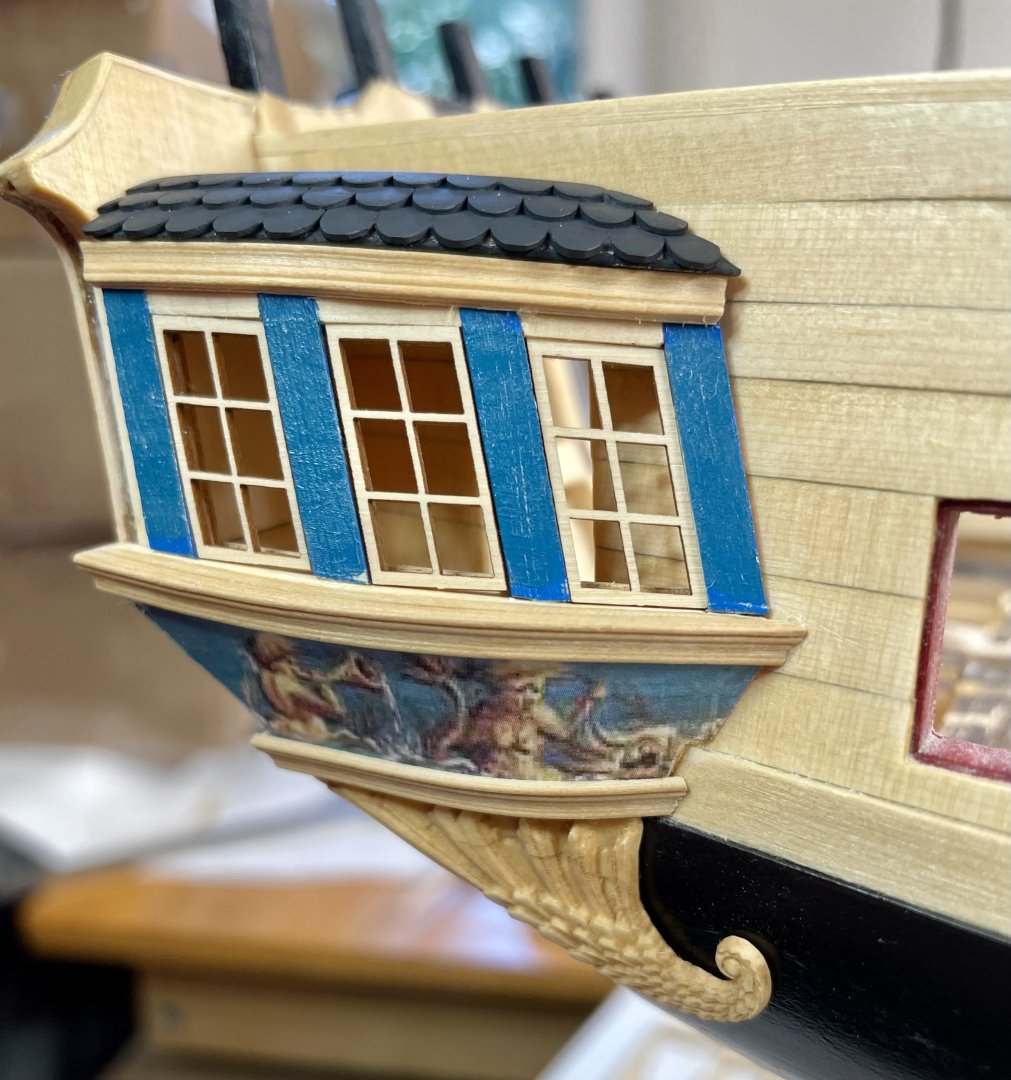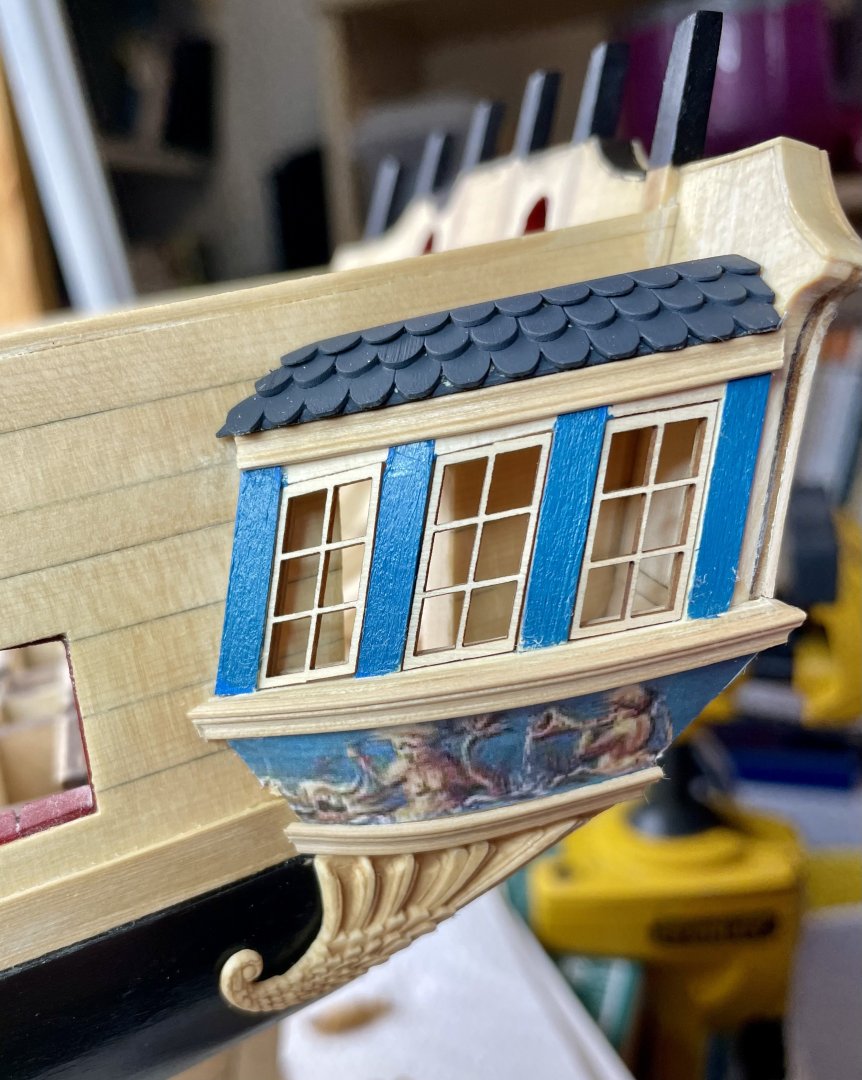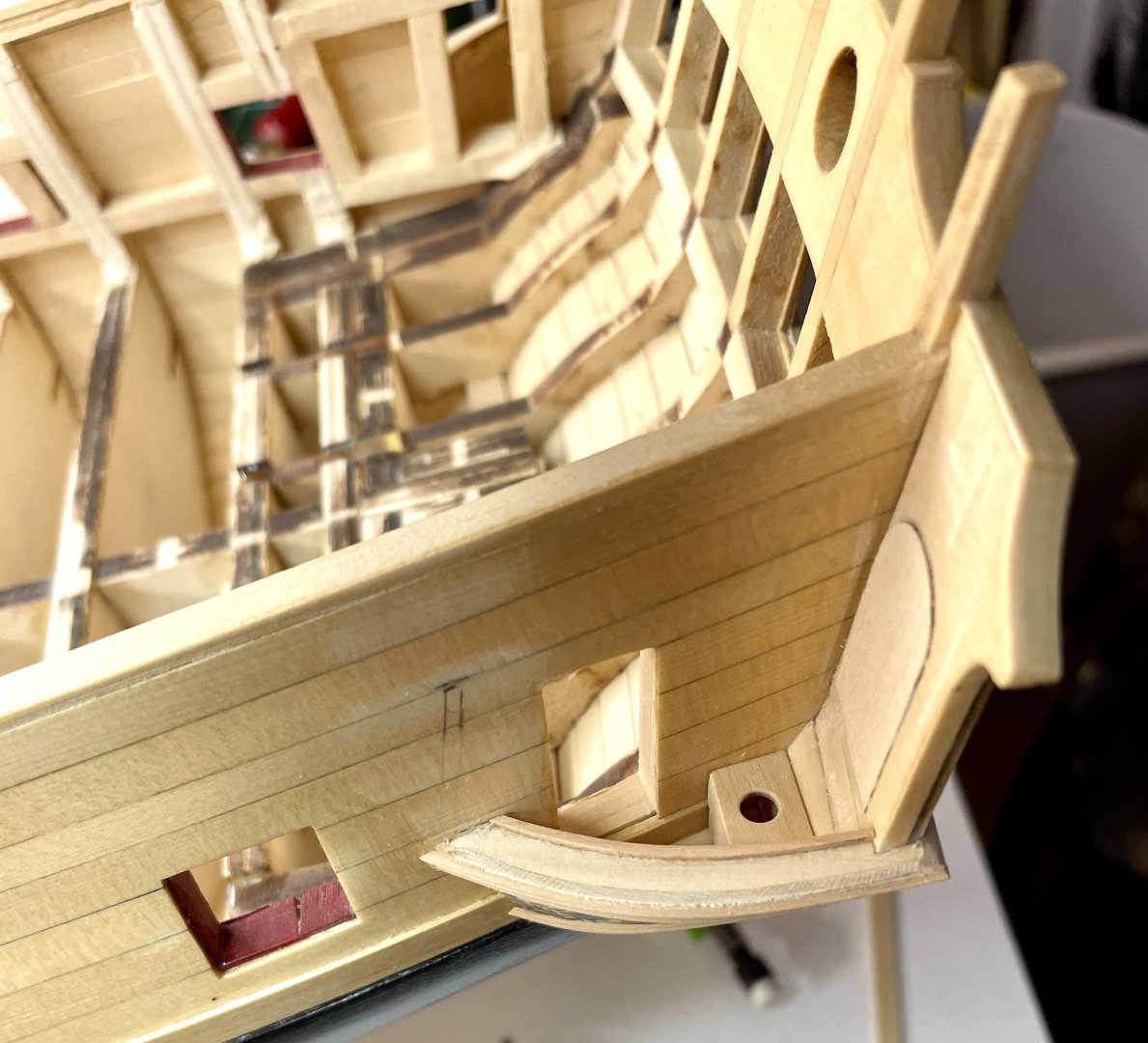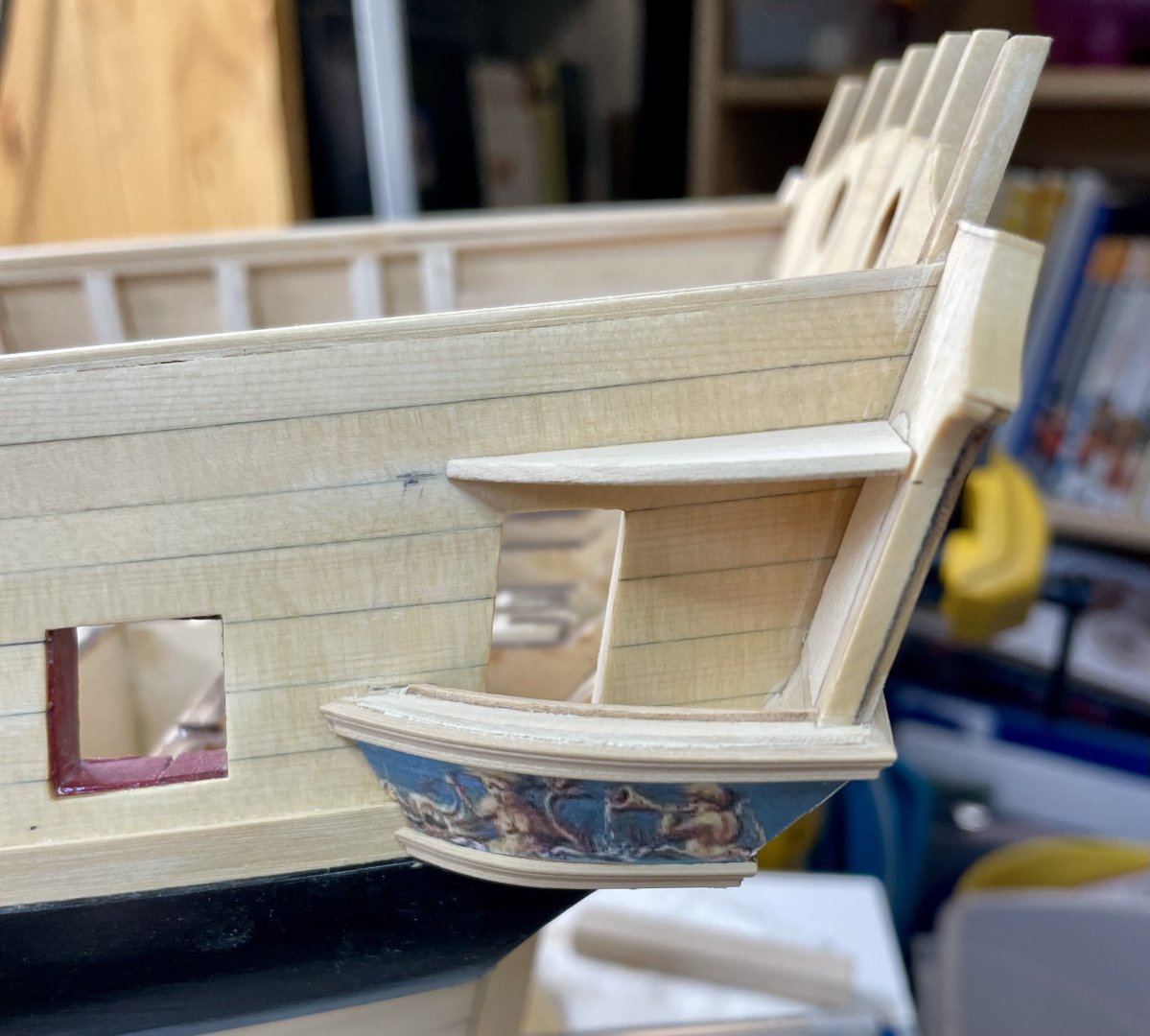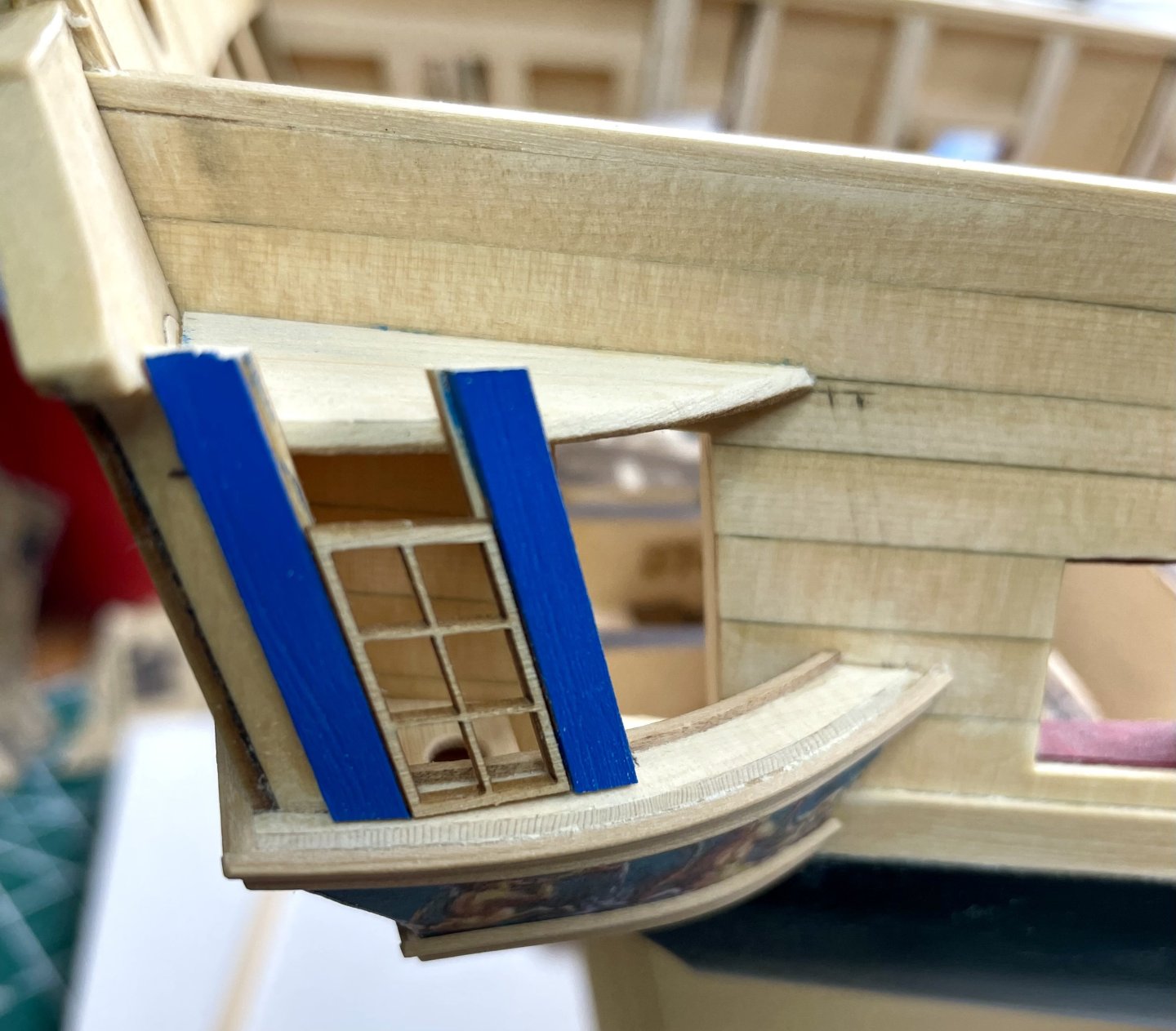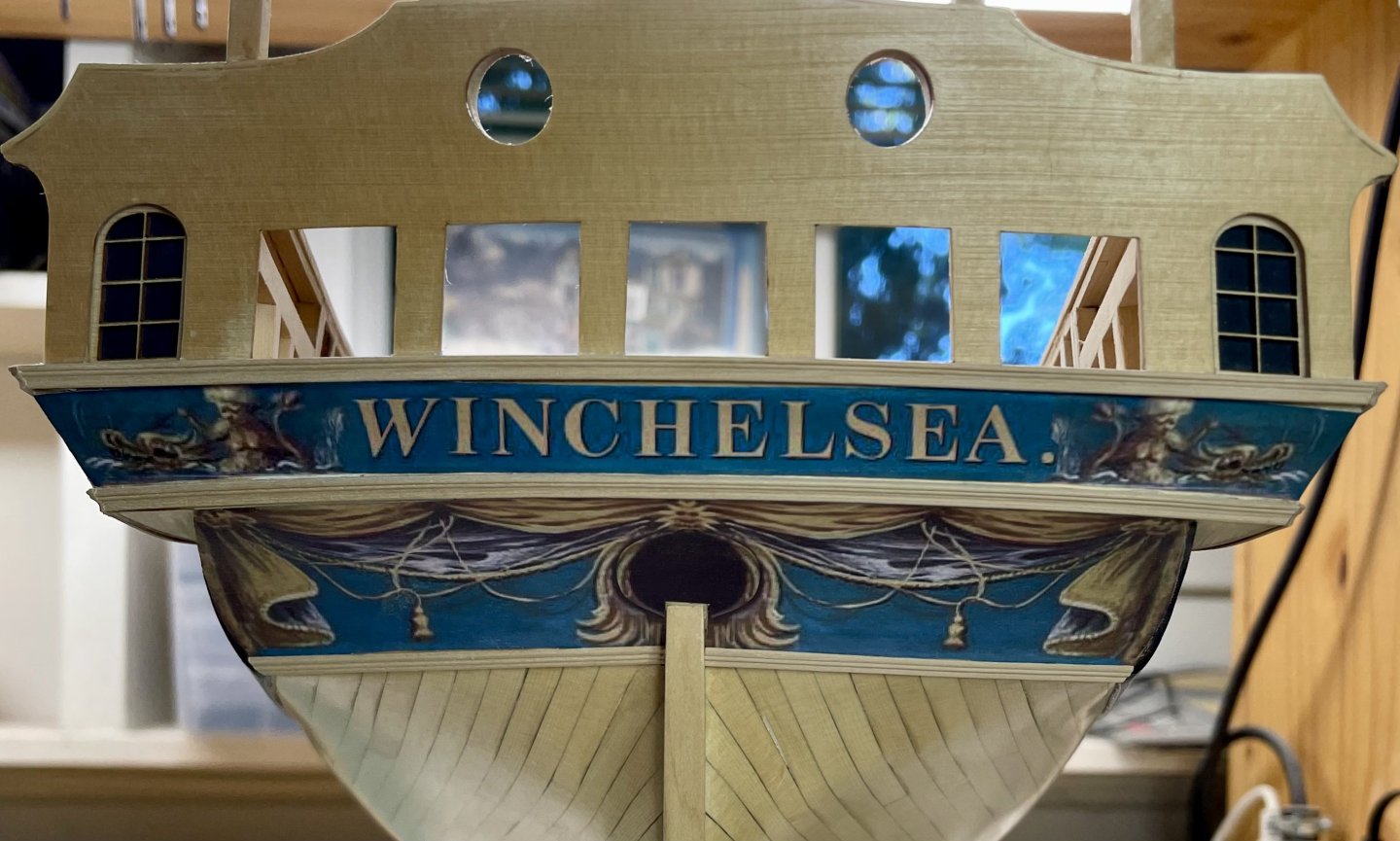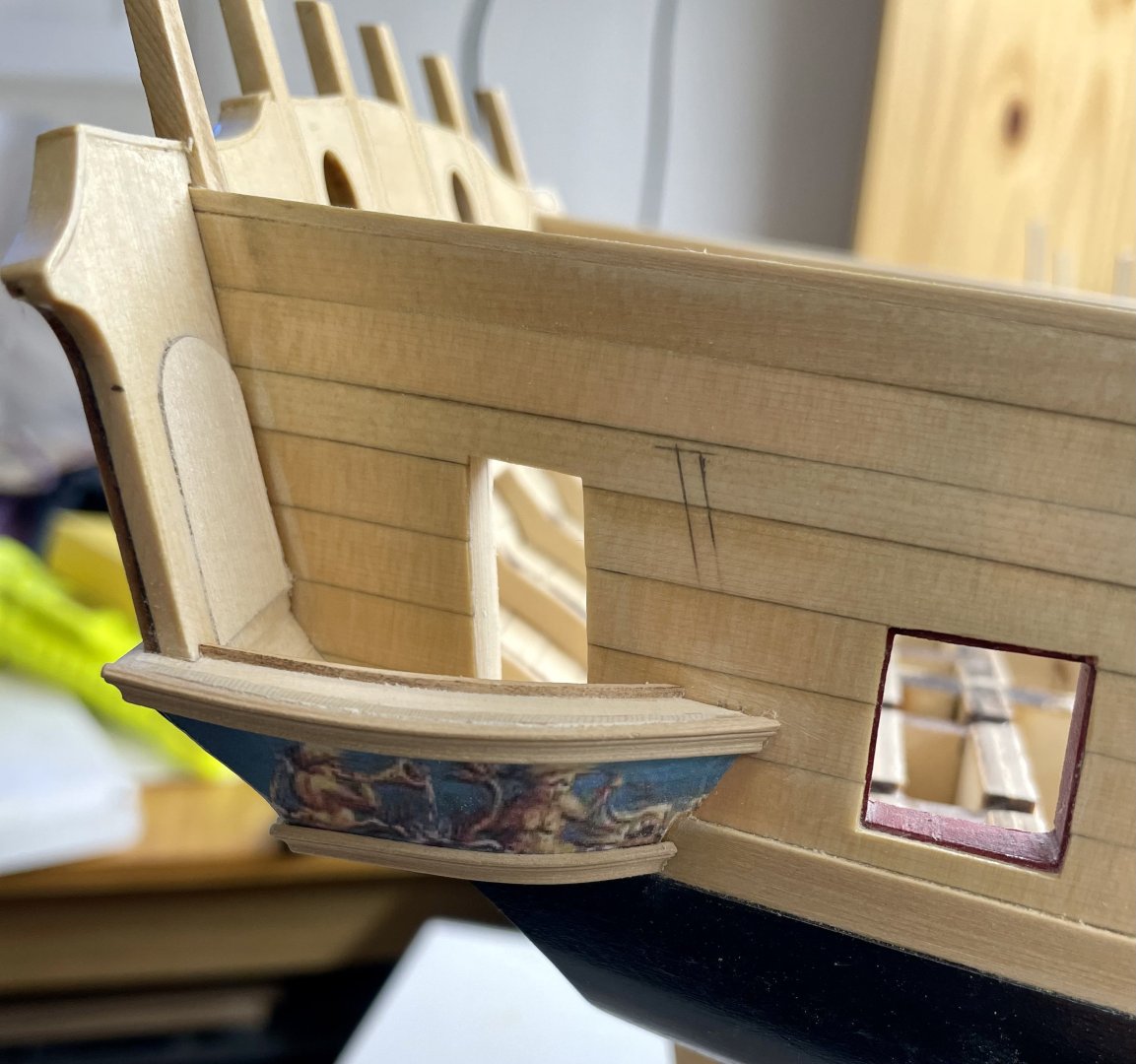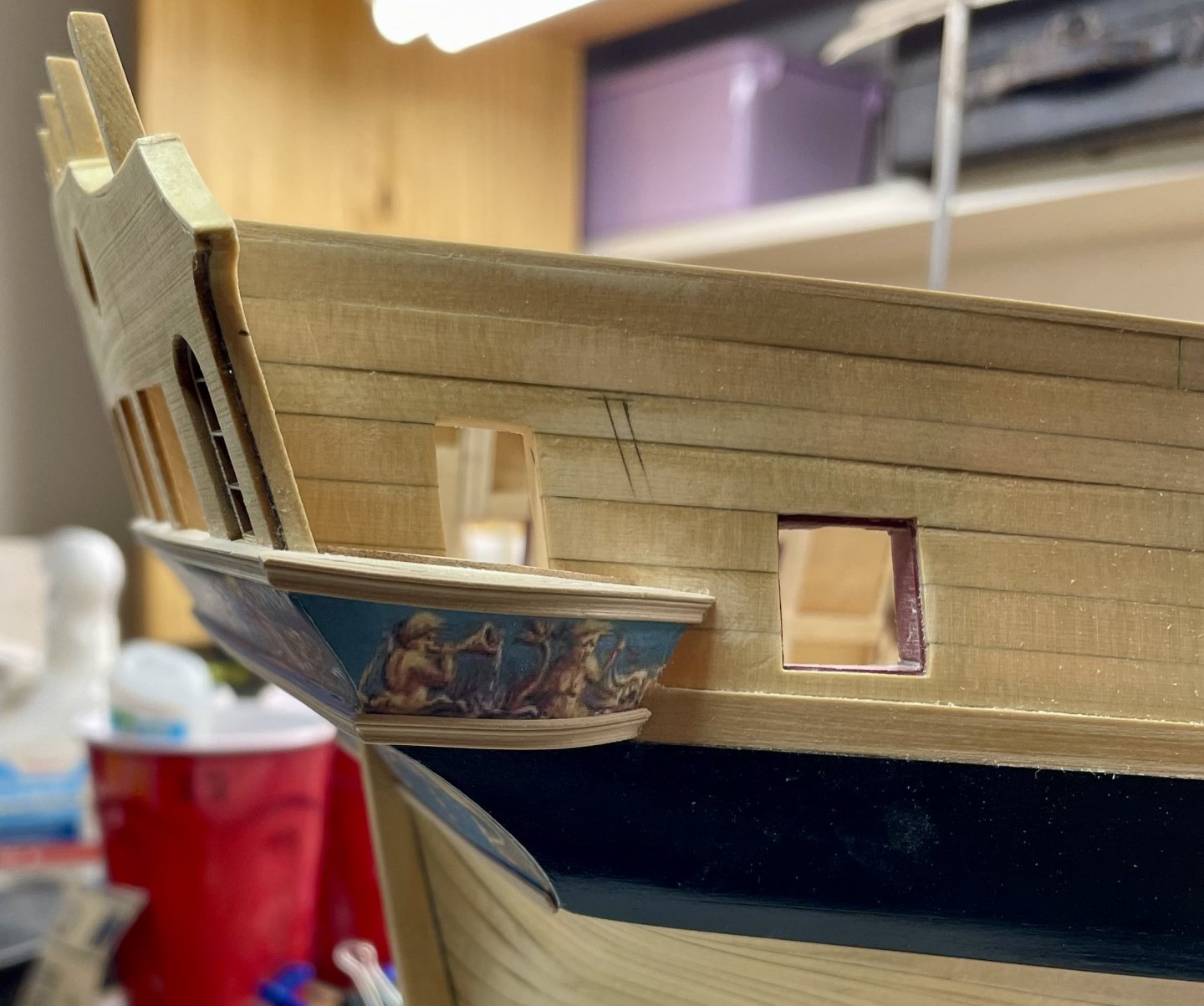-
Posts
66 -
Joined
-
Last visited
About shauer
- Birthday 07/08/1968
Profile Information
-
Gender
Male
-
Location
Pittsford, NY
-
Interests
Model building, Antique/Vintage electronics (tube radios and tv), automotive, 1970s/80s computers and software
Recent Profile Visitors
-
 shauer reacted to a post in a topic:
HMS Winchelsea 1764 by woodartist - 1:48
shauer reacted to a post in a topic:
HMS Winchelsea 1764 by woodartist - 1:48
-
 shauer reacted to a post in a topic:
HMS Portland 1770 by westwood - Portland Scale Ship Co. - 1:48 - 50 gun 4th rate
shauer reacted to a post in a topic:
HMS Portland 1770 by westwood - Portland Scale Ship Co. - 1:48 - 50 gun 4th rate
-
 shauer reacted to a post in a topic:
HMS Winchelsea by Greg M - 1/48 scale
shauer reacted to a post in a topic:
HMS Winchelsea by Greg M - 1/48 scale
-
 Greg M reacted to a post in a topic:
HMS Winchelsea 1764 by shauer - 1:48
Greg M reacted to a post in a topic:
HMS Winchelsea 1764 by shauer - 1:48
-
 Greg M reacted to a post in a topic:
HMS Winchelsea 1764 by shauer - 1:48
Greg M reacted to a post in a topic:
HMS Winchelsea 1764 by shauer - 1:48
-
 shauer reacted to a post in a topic:
USF Confederacy 1778 By KennyH78 - Model Shipways - 1:64
shauer reacted to a post in a topic:
USF Confederacy 1778 By KennyH78 - Model Shipways - 1:64
-
 shauer reacted to a post in a topic:
HMS Winchelsea 1764 by woodartist - 1:48
shauer reacted to a post in a topic:
HMS Winchelsea 1764 by woodartist - 1:48
-
 shauer reacted to a post in a topic:
HMS Winchelsea 1764 by woodartist - 1:48
shauer reacted to a post in a topic:
HMS Winchelsea 1764 by woodartist - 1:48
-
 shauer reacted to a post in a topic:
HMS Portland 1770 by westwood - Portland Scale Ship Co. - 1:48 - 50 gun 4th rate
shauer reacted to a post in a topic:
HMS Portland 1770 by westwood - Portland Scale Ship Co. - 1:48 - 50 gun 4th rate
-
 Nearshore reacted to a post in a topic:
HMS Winchelsea 1764 by shauer - 1:48
Nearshore reacted to a post in a topic:
HMS Winchelsea 1764 by shauer - 1:48
-
 JpR62 reacted to a post in a topic:
HMS Winchelsea 1764 by shauer - 1:48
JpR62 reacted to a post in a topic:
HMS Winchelsea 1764 by shauer - 1:48
-
 Freebird reacted to a post in a topic:
HMS Winchelsea 1764 by shauer - 1:48
Freebird reacted to a post in a topic:
HMS Winchelsea 1764 by shauer - 1:48
-
 westwood reacted to a post in a topic:
HMS Winchelsea 1764 by shauer - 1:48
westwood reacted to a post in a topic:
HMS Winchelsea 1764 by shauer - 1:48
-
 westwood reacted to a post in a topic:
HMS Winchelsea 1764 by shauer - 1:48
westwood reacted to a post in a topic:
HMS Winchelsea 1764 by shauer - 1:48
-
 westwood reacted to a post in a topic:
HMS Winchelsea 1764 by shauer - 1:48
westwood reacted to a post in a topic:
HMS Winchelsea 1764 by shauer - 1:48
-
 Chuck reacted to a post in a topic:
HMS Winchelsea 1764 by shauer - 1:48
Chuck reacted to a post in a topic:
HMS Winchelsea 1764 by shauer - 1:48
-
A brief update of progress over the past 10 days or so. Things have been a little slow but hoping to be able to spend some solid time on this over the weekend. Almost half way into planking the inboard bulwarks. I figured the most critical plank placement was the plank immediately below the gun ports which needs to align with the bottom of each port so I started there at the bow. I then added the bottom plank tight against the one already placed. Used some scrap and some toothpicks as levers to apply upward pressure while the glue set. And continued from there working aft. Nothing has been faired yet. Figure about another week of work to wrap this up. The second thinner layer of planking will hide some of my sins on the lower planks where I over-faired the bulwarks down close to the deck. Steve
-
 shauer reacted to a post in a topic:
Bugatti Type 35b by kingslug - Italeri - 1/12 scale - PLASTIC
shauer reacted to a post in a topic:
Bugatti Type 35b by kingslug - Italeri - 1/12 scale - PLASTIC
-
 VolkerB reacted to a post in a topic:
HMS Winchelsea 1764 by shauer - 1:48
VolkerB reacted to a post in a topic:
HMS Winchelsea 1764 by shauer - 1:48
-
Once again, thanks for the positive comments and likes. And now onto chapter 4. Pretty basic stuff this week with the first few steps of chapter 4 leading up to the installation of the false deck. Added the two sub decks and the beams. I applied one coat of matt water-based sealer to the sub decks to test out if I liked the look. Weighing using a matt finish on the deck, or just keeping it completely natural. I would like to seal the deck planking with something but don't want it to be noticeable. At this point all beams are only dry fit. You can also see the center line I ran the length of the deck. Next was dry fitting the false deck sheets. As I placed the sheets and got them aligned, I followed Chuck's suggestion in the directions and drilled & pinned the pieces in place. All of this still only dry fit. Then it was time to pull it all apart and glue the beams and false deck permanently into place. I ended up adjusting almost all the beams again during final assembly as everything was still just a little too tight and was pushing some of the beams out of alignment. I was able to install the false deck one piece at a time relying on the pre-drilled pin locations for alignment. I used several 1 Kg bags of shot to press the deck pieces down while the glue set. Current state of things. The bow filler pieces are installed. I'm doing one last round of fairing prior to starting on the inner bulwarks. Steve
-
Chapter 3 is now complete, took about 6 weeks to work through it. I had a lot of fun learning how to create and use scrapers for the first time to make the fancy moldings. It was very satisfying to work through this chapter as almost every part added brought the exterior of the model to life. However my patience was tried more than once with all the tiny pieces involved in the tops and bottoms of the fluted columns. QG shots showing the now complete look with the rails in the roofs added. I will likely come back and add fancy molding above the windows once I permanently install the windows much later in the build. Right now they are just placed in position with friction holding them in. Included previous picture of the complete stern. And some pictures along the sides of the hull. I've known that my gun ports are slightly high since I completed chapter 1. The friezes and moldings worked out but I will have a little more work cutting in relief for the gun port hinges into the molding on a couple of these in future. I also placed the joints in the upper molding at the catheads on the bow and at one of the swivel gun locations at the stern. You can also see where the channels will be located. Another minor mistake from chapter 1 is that the bollard timbers are a little low. I lined up the opening for the bowsprit with the top of the stem in chapter 1 which ended up being a little low. I ended up removing a little material from the bottoms of the timbers when I should have just left it alone. The bottom side molding therefore lands a little high on the bow. Only those who know what it should look like will ever be able to tell. Now on to chapter 4 Steve
-
Working on my build today and decided to take a break from applying the friezes and post some progress pictures from the past 10 days or so. I completed the fluted columns and remaining transom details. Then jumped into working on the fancy moldings and friezes along the sides. I liked the approach I saw in both Frank's and Greg's build logs where they built up the channels and used them to lay out the placement of the center molding to prevent needing to remove large pieces of glued-on molding later. I built up the channels from the chapter 11 parts per the instructions. Never used the spray mount before but it was really easy to use and worked well. I then made up some patterns from the assembled channels to use in placing the center molding. Back to scraping the center molding. This one took 3 tries to get the width of the scraper correct. I kept making it too wide. I now clamp the work piece on my table and push the scraper along with both hands to control the angle of the scraper and make nice smooth linear passes. Locating the channels along the hull and positioning the spacers. Mounting the center molding. Testing to see if there is such a thing as too many clamps... Friezes mounted on starboard side. Still need to mount the lower frieze on the port side. Between the slight stretching of the paper, and the fact that the port and starboard sides will be slightly different lengths, I'm going to need to squeeze or stretch the segments a little to match the start and end positions to match the starboard. I'll pick aspects of the frieze design that are forgiving to this adjustment and hide them under the channels. Next steps will be to wrap up chapter 3 with the lower & upper moldings and the rails on the QG roof. Steve
-
Thank you, Frank. I appreciate the feedback and the compliment. I forget who's build log I got the paint mix from but it's approximately 2/3 - 3/4 cerulean blue, about 1/4 - 1/3 yellow ochre, and a dab of titanium white to lighten it up to match. Then adjust as needed. I've enjoyed working on this chapter 3. The stern details and the quarter galley construction provide a wide variety of challenges after doing nothing but planking for a couple months. Steve
-
Thank you everyone for the likes and comments. Spent the week and much of Saturday this weekend working on the transom details including the cove and related trim around the false lights, and the resin carvings. I also completed the fluted columns on the quarter galleries and started the same details on the transom. Almost done with the detail work on the stern. Still need to add the rails on the QG roofs and complete the fluted columns on the transom in the next few days. Then I need to work on the fancy moldings and friezes along the sides of the hull. I also painted the stem and bollard timbers black so that I won't need to work with black paint so close the the friezes in the future (I hope) Progress on the transom details. I'll call out one of my mistakes here. I completely messed up the painted edge along the upper portion of the cove. I fixed it by applying a very thin veneer strip of cedar over the mess and sanding it down to paper thin, You can see the edges of the fix along the ends of the upper cove. Overall this looks 100% better than having crimson splotches along the upper edge. scraping the base and top of the fluted columns. column details added to the QGs. This was a real trial, I think I dropped and lost one piece for each 3 that I placed. The instructions suggest using needle files to shape the sides of the base and top moldings. I found it was easier to use a fresh chisel blade and cut downward across the grain along the sides to remove the material. The material parts along the grain cleanly and leaves nice clean edges. I think I may add some left over fancy molding along the tops of the QG windows in between the columns the way that Frank has done with his build. I really like that look. And where I am currently at. Started the fluted columns on the transom. These are so much easier to work on than the QG columns. Steve
-
That looks great! One additional word of caution, allow each coat of wipe on poly to fully cure before applying another. I ended up with a variation of your original problem using wipe-on. The first coat looked so good that I applied a second coat after only a couple hours. The first coat was not fully cured and the whole thing turned gummy and thick with the second coat resulting in a gloss finish that should have been satin. Waited a couple days, sanded, and re-applied just like you. So it is possible to run into the same issue even with wipe-on if doing multiple coats. Still working on the patience thing myself I guess... Steve
-
I feel like I've been living under a rock. This is very enlightening, never considered this as an option. I'm definitively in the camp of having a full library of books with great pictures / illustrations but have always been intimidated by anything with a carving. Thanks for sharing this Chuck! I'm feeling the need to order a resin printer to set next to my FDM printer. Steve
-
.thumb.jpg.0c4ba74a8c20632da6eafe3d432bde24.jpg)
Hello from the Finger Lakes Region of NY state!
shauer replied to Rinekar's topic in New member Introductions
Welcome! Looking forward to following your first build. I'm also a native of the finger lakes region. Steve -
I have the QG closed in and all trim complete with the exception of the the fluted columns. I'm going to hold off on these until I can do the same detail on the transom at the same time. Also have the shingles on the roof as well as the drops installed under the galleries. I'm pretty happy with how things have turned out so far. The window fit is good. The windows are just set in for now. I'll be removing them and waiting to install them at a later time. I also did a little painting on the transom then added the frieze to the upper portion as well as the fancy molding around the top edge. There is one small gap in between the pieces on the upper middle left. Fortunately this will be covered later. Also prepping some more of the resin carvings for placement on the model. I have been very pleasantly surprised at how well these look after following Chuck's instructions on using the fruitwood gel stain. I brush a liberal amount of stain on the piece and wipe it off with a clean rag about a minute later. I then found that if I work the piece with a clean dry brush a couple times over the next hour or two that the stain evens out and lightens up a little more. The more you work a spot with the dry brush, the lighter it gets. Plan is to fabricate and install the cove on the transom, then work on the fluted columns. I'll also be painting the upper portion of the stem and the bollard timbers prior to adding the side moldings and friezes. Steve
-
More progress on the quarter galleries. I have the uprights installed on the port side QG and about to start that process on the starboard. Definitely a fiddley bit of work getting all the angles correct on the base of the uprights and along the side of the hull. I went back and forth a couple times and got all 3 windows to fit but it was a really tight squeeze to accommodate the width of the uprights and the 3 windows along the arc of the QG. I ended up cheating a little by making the upright along the transom slightly narrow and really drastic bevel on the forward upright as mentioned in the instructions. A few pictures taken along the way Got the seats installed. Easiest to assemble the seat and seat front outside the model and then place in the QG. Then added the top piece. It looks like most of my measuring back in chapter 1 paid off as I was able to use the planking lines as a guide for the angle of the top piece. Working on adding the uprights and using the windows as spacers. I temporarily tacked the uprights along the top piece but this step was similar to building a house of cards. Port side uprights with windows placed as spacers. I still need to try the other windows provided to see if I can get a better fit but this is pretty good. Steve
-
I completed the moldings and friezes for the lower portion of the QG, upper counter, and lower counter Had to redo the upper counter frieze due to not leaving good enough alone. I was done and happy until I saw a small spot that needed trimming. Managed to take off too much of the frieze leaving a big spot of white paper in its place. Time to rip it off and do it again.. I discovered a use for my used, dull chisel x-acto blades. They make good blanks for scrapers. Adding the facilities to the QG and then I'll start in on closing them up. Steve
-
Thanks everyone for the likes and positive comments and encouragement. Posting updates to this thread is one of the ways I keep myself motivated on a multi-year project. Yes, doing any new skill for the first time is daunting, I try to not over think it (I'm an engineer so it's an occupational hazard). Just jump in and start doing it, plan on making mistakes and move on. So far it's working. The moldings that follow the upper counter have a pretty good curve to them edgewise. Did anyone need to do anything special like edge set them similar to the upper counter planks? Or is the boxwood flexible enough to take the curve with just some judicious use of clamps? Plan for this weekend is to get the QG moldings mounted, get some of the friezes glued into place, and start closing in the QG. We all know what is said about making plans, so we'll see where I am at on Sunday evening. The gel stain for the resin parts is arriving Monday so that will be on next week's list. Steve
-
Tried to make my first moldings ever tonight. Been reading and studying how several others have done it and it is time to create the fancy moldings for along the upper counter and the quarter galleries. I used a razor blade for the scraper and mounted my rotary tool in my bench vice with a standard cutting disk installed. The set up has the disk spinning away from you on top which is where I held the razor blade to shape it. I found the most difficult part was getting the width of the cutout just right. I ruined half a piece of boxwood trim because there was just a little play in my first attempt. I found you want what is almost a light press fit over the stock material. First attempt is on the left and is just a little too wide. The one that worked is the one on the right with the arrow pointing to it so I don't get confused. What the molding used on the upper counter and quarter gallery is supposed to look like from the plans The 1/8 inch strips for the upper counter and quarter galley moldings. I'm happy with the results. Still need to make a scraper for the lower counter molding profile. I wanted to install these moldings now before the galleries are closed up and clamping becomes more difficult. The 1/16th inch thick molding is in the center. 1/32 inch pieces to the left and right. Steve
About us
Modelshipworld - Advancing Ship Modeling through Research
SSL Secured
Your security is important for us so this Website is SSL-Secured
NRG Mailing Address
Nautical Research Guild
237 South Lincoln Street
Westmont IL, 60559-1917
Model Ship World ® and the MSW logo are Registered Trademarks, and belong to the Nautical Research Guild (United States Patent and Trademark Office: No. 6,929,264 & No. 6,929,274, registered Dec. 20, 2022)
Helpful Links
About the NRG
If you enjoy building ship models that are historically accurate as well as beautiful, then The Nautical Research Guild (NRG) is just right for you.
The Guild is a non-profit educational organization whose mission is to “Advance Ship Modeling Through Research”. We provide support to our members in their efforts to raise the quality of their model ships.
The Nautical Research Guild has published our world-renowned quarterly magazine, The Nautical Research Journal, since 1955. The pages of the Journal are full of articles by accomplished ship modelers who show you how they create those exquisite details on their models, and by maritime historians who show you the correct details to build. The Journal is available in both print and digital editions. Go to the NRG web site (www.thenrg.org) to download a complimentary digital copy of the Journal. The NRG also publishes plan sets, books and compilations of back issues of the Journal and the former Ships in Scale and Model Ship Builder magazines.

